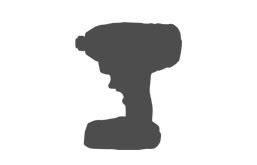Quick Select
Select specific models or manufacturers you want to see
Comparison tables not only compare products they organize product details into a normalized readable format. SpecLook does the hard work for you by finding all of the information from multiple sources, normalizing the values, and organizing all that data into easy to read tables. SpecLook tables allow you to search, sort, and filter, making it easier to find the details that are most important to you.
The comparison table on this page shows all products available for this type. You can use the filters section next to the table to narrow down the listings, OR you can select only the products and/or manufacturers you would like to see by selecting them here and then clicking the Customize Table button.
Most Popular
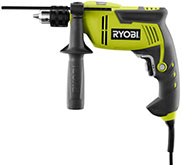
Others
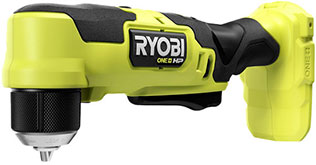
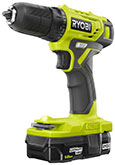
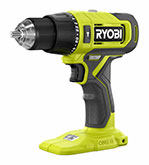
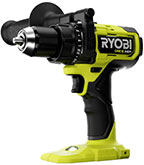

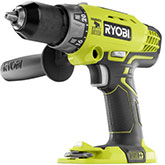
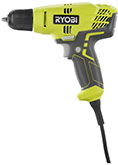
Most Popular

Others
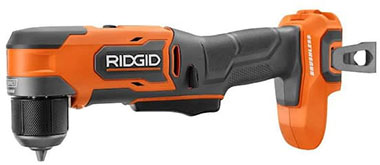
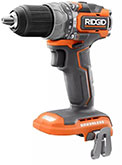
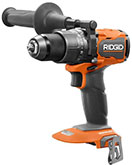
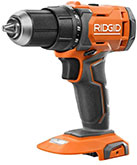
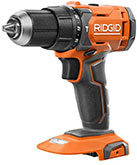
Most Popular
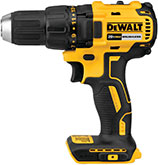
Others
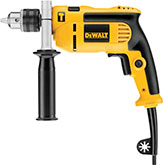

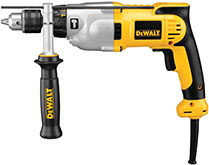
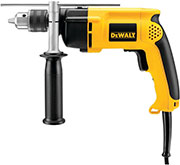
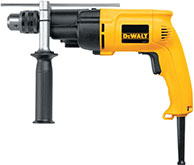
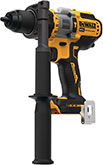
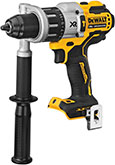
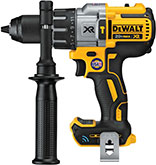
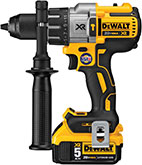
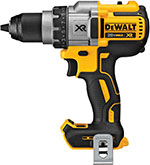

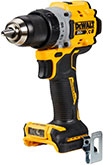
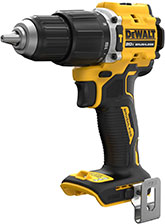
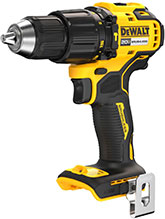
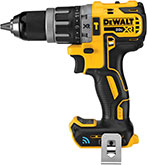
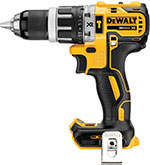
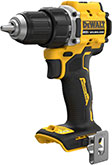
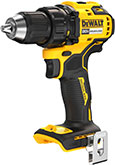
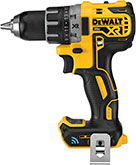
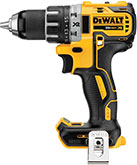
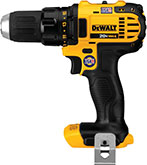

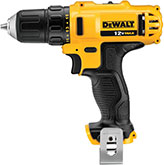
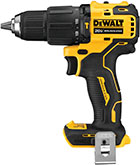
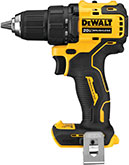
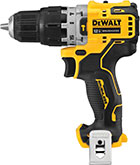
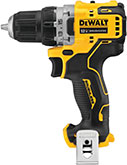
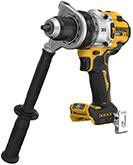
Most Popular
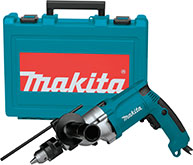
Others
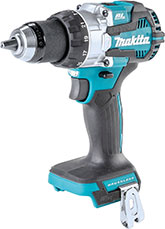
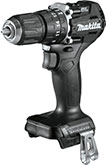
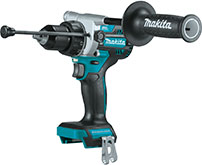
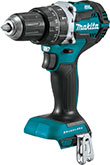
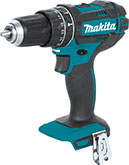
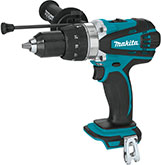
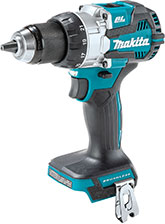
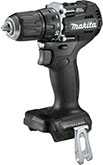
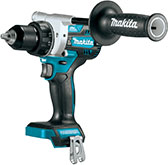
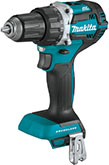
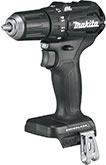
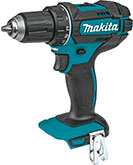
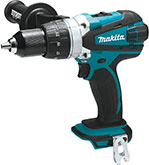
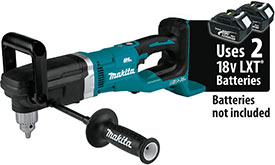
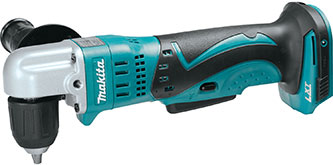
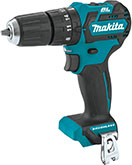
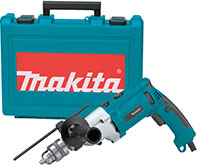
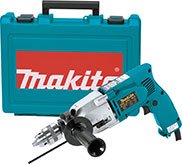

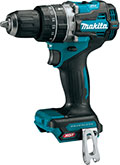



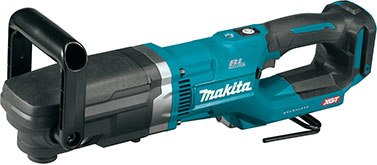
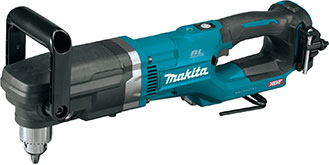
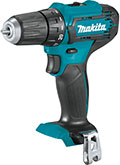

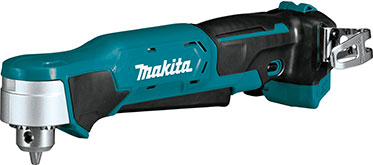
Most Popular
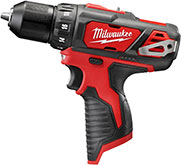
Others
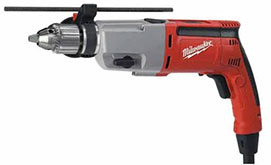
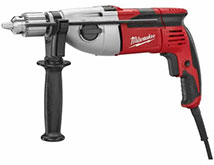
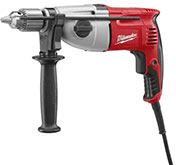

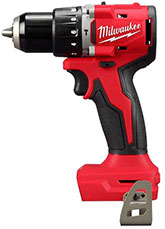

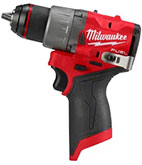
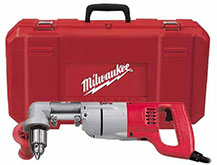
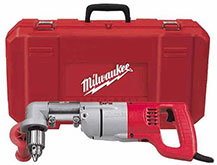
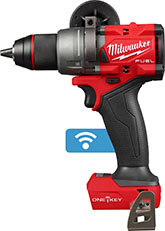
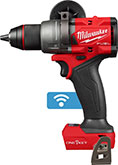
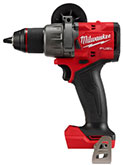
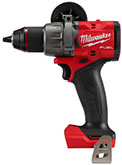
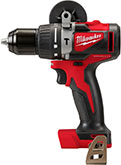
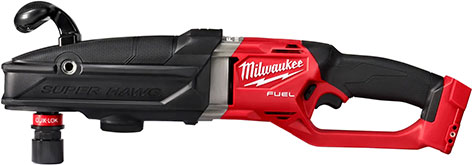
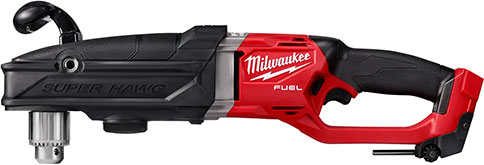
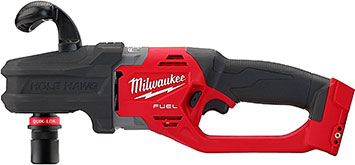
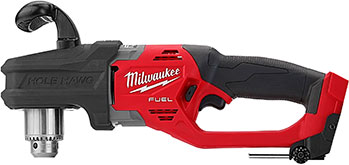
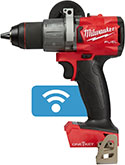
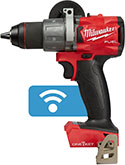
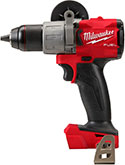
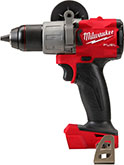
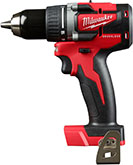
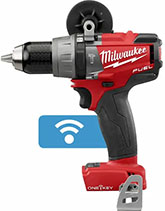
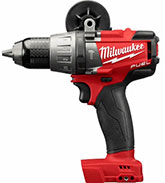
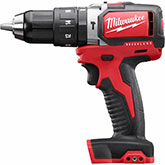

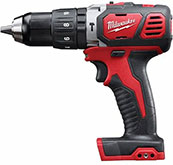
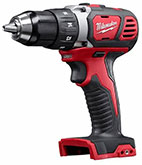
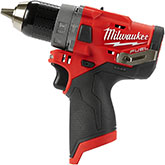
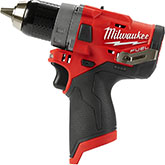

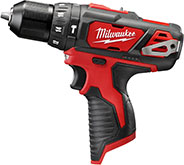

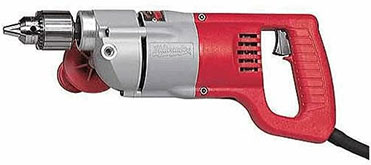
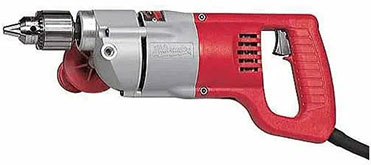
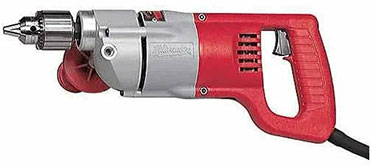
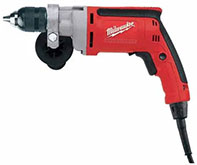
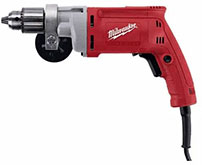
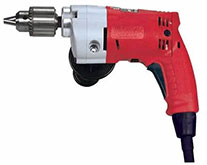
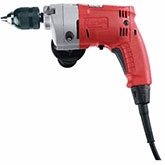
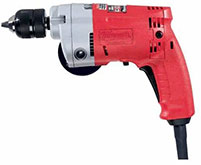
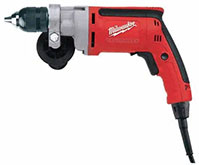
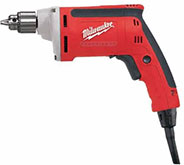
Most Popular
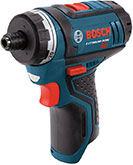
Others
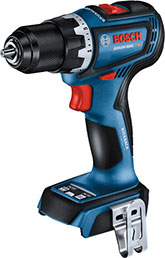
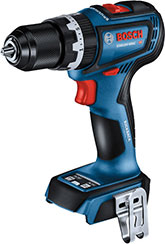
Need help choosing which product fits you best? Click Here
Finding the Best Cordless Power Drill for You
When it comes to selecting the best cordless power drill, there is a lot to consider. With various types of drills, features, form factors, and specifications, it’s essential to have a clear understanding of your options so you can make the right choice. In this comparison, we dive deep into over 100 different power drills, hammer drills, and right angle power drills. We discuss the key features you should be considering when looking into a new power drill, and we clarify the difference between standard drills vs. impact drivers and impact wrenches. We’ll also discuss the pros and cons of battery-powered vs. corded drills, the difference between brushed and brushless motors, and the key specifications that make a difference in performance.
Below is a detailed comparison table with many of the most popular power drills on the market. We’ve analyzed dozens of models from Milwaukee, DeWalt, Makita, and more. Scroll down to view the comparison table or click here to continue reading about the different types of power drills and what features you should be considering throughout your investigation.
Comparison Awards
Awards are based on the comparison of details and specifications gathered for each product. SpecLook does not favor or promote any specific products or manufactures over any others.
Filters
You can also sort some of the columns by clicking the column titles.
Full Power Drills Comparison Table
(Hold Shift while scrolling to scroll horizontally)
| Product | Compare | Image | Category | Manufacturer | Model | Avg. Price | Links | Avg. Rating | Total Rating Count | Ratings | Dimensions (HxWxD) | Weight | Power Type | Battery System | Motor Type | Amps | Battery Type | Voltage | Cord Length | Chuck Size | Chuck Type | Max Torque | Power Output (UWO) | Max Impacts/Blows Per Minute | Max Speed | Drive Control | Form Factor | Air Inlet Size | Included | Extra Features | Certifications | Manufacturer Warranty | Price |
|---|---|---|---|---|---|---|---|---|---|---|---|---|---|---|---|---|---|---|---|---|---|---|---|---|---|---|---|---|---|---|---|---|---|
| Ryobi 18V ONE+ 1/2" HAMMER DRILL (PCL220) |
 Image provided by: www.ryobitools.com Image provided by: www.ryobitools.com |
Hammer Drills | Ryobi | PCL220 | 1 | Check Price at Home Depot | 4.610 | 529 | Home Depot4.5 / 5.0 (382) Ryobi4.9 / 5.0 (147) |
7.6 in x 2.3 in x 7.7 in (19.3 cm x 5.84 cm x 19.56 cm) |
2.70 | Cordless | RYOBI 18V | Brushed | 0.000 | Lithium-Ion | 18 | 0.500 | Keyless | 42.917 | 0 | 28,000 | 1,750 | 2 Speed Modes | Standard | LED Light, Lanyard Loop | UL Listed | 3 Year Limited | Check Price at Home Depot | ||||
| Ryobi 18V ONE+ HP BRUSHLESS 1/2" HAMMER DRILL (PBLHM101B, PSBHM01) |
 Image provided by: www.ryobitools.com Image provided by: www.ryobitools.com |
Hammer Drills | Ryobi | PBLHM101B | 1 | Check Price at Home Depot | 4.600 | 1,098 | Home Depot4.5 / 5.0 (835) Ryobi4.9 / 5.0 (263) |
7.81 in x 2.97 in x 7.54 in (19.84 cm x 7.54 cm x 19.15 cm) |
2.80 | Cordless | RYOBI 18V | Brushless | 0.000 | Lithium-Ion | 18 | 0.500 | Keyless | 62.500 | 0 | 31,000 | 2,100 | 2 Speed Modes, 3 Drive Modes (Drill, Hammer-Drill, Drive) | Standard | Belt Clip, Side Handle | LED Light | UL Listed | 3 Year Limited | Check Price at Home Depot | |||
| Ryobi 18V ONE+™ HAMMER DRILL (P214) |
 Image provided by: www.ryobitools.com Image provided by: www.ryobitools.com |
Hammer Drills | Ryobi | P214 | 1 | Check Price at Amazon | 4.700 | 841 | Ryobi4.7 / 5.0 (841) | 7.87 in x 3.07 in x 9.69 in (19.99 cm x 7.8 cm x 24.61 cm) |
3.20 | Cordless | RYOBI 18V | Brushed | 0.000 | Lithium-Ion | 18 | 0.500 | Keyless | 50.000 | 0 | 24,000 | 1,600 | 2 Speed Modes, 3 Drive Modes (Drill, Hammer-Drill, Drive) | Standard | Side Handle, Screwdriver Bit | LED Light, Bit Holder, MAGTRAY™ Magnetic Holder | UL Listed | 3 Year Limited | Check Price at Amazon | |||
| Ryobi 5/8" VSR HAMMER DRILL (D620H) |
 Image provided by: www.ryobitools.com Image provided by: www.ryobitools.com |
Hammer Drills | Ryobi | D620H | 1 | Check Price at Amazon | 4.370 | 2,211 | Home Depot4.3 / 5.0 (1806) Ryobi4.7 / 5.0 (405) |
9.5 in x 11.5 in x 3 in (24.13 cm x 29.21 cm x 7.62 cm) |
5.10 | Corded | 6.200 | 120 | 72 in (182.88 cm) |
0.500 | Keyed | 0.000 | 0 | 43,000 | 2,700 | 2 Drive Modes (Drill, Hammer-Drill) | Standard | Chuck Key, Handle | Trigger Lock, Depth Gauge, Variable Speed Dial | UL Listed | 3 Year Limited | Check Price at Amazon | |||||
| Ryobi 18V ONE+ 3/8" DRILL/DRIVER (PDD209K) |
 Image provided by: www.ryobitools.com Image provided by: www.ryobitools.com |
Standard Drills | Ryobi | PDD209K | 1 | Check Price at Home Depot | 4.580 | 1,370 | Home Depot4.5 / 5.0 (1006) Ryobi4.8 / 5.0 (364) |
8.25 in x 8.38 in x 3.5 in (20.96 cm x 21.29 cm x 8.89 cm) |
3.60 | Cordless | RYOBI 18V | Brushed | 0.000 | Lithium-Ion | 18 | 0.375 | Keyless | 11.250 | 0 | 0 | 600 | Variable Speed Trigger, 24 Position Clutch | Standard | LED Light, Bit Holder | UL Listed | 3 Year Limited | Check Price at Home Depot | ||||
| Ryobi CORDED VARIABLE SPEED DRILL (D43K) |
 Image provided by: www.ryobitools.com Image provided by: www.ryobitools.com |
Standard Drills | Ryobi | D43K | 1 | Check Price at Amazon | 4.540 | 1,852 | Home Depot4.5 / 5.0 (1588) Ryobi4.8 / 5.0 (264) |
12.4 in x 3.54 in x 12.79 in (31.5 cm x 8.99 cm x 32.49 cm) |
3.80 | Corded | 5.500 | 120 | 72 in (182.88 cm) |
0.375 | Keyless | 0.000 | 0 | 0 | 1,600 | Variable Speed Trigger | Standard | Bag | Trigger Lock | UL Listed | 3 Year Limited | Check Price at Amazon | |||||
| Ryobi 18V ONE+ HP COMPACT BRUSHLESS 3/8" RIGHT ANGLE DRILL (PSBRA02) |
 Image provided by: www.ryobitools.com Image provided by: www.ryobitools.com |
Right Angle Drills | Ryobi | PSBRA02 | 1 | Check Price at Amazon | 4.580 | 1,061 | Home Depot4.5 / 5.0 (767) Ryobi4.8 / 5.0 (294) |
11.5 in x 2.3 in x 3.6 in (29.21 cm x 5.84 cm x 9.14 cm) |
2.50 | Cordless | RYOBI 18V | Brushless | 0.000 | Lithium-Ion | 18 | 0.375 | Keyless | 29.167 | 0 | 0 | 1,700 | 2 Speed Modes, Variable Speed Paddle Trigger | Right Angled | Belt Clip | LED Light | UL Listed | 3 Year Limited | Check Price at Amazon | |||
| Ryobi 18V ONE+ RIGHT ANGLE DRILL (P241) |
 Image provided by: www.ryobitools.com Image provided by: www.ryobitools.com |
Right Angle Drills | Ryobi | P241 | 1 | Check Price at Amazon | 4.570 | 1,279 | Home Depot4.5 / 5.0 (990) Ryobi4.8 / 5.0 (289) |
5.118 in x 3.149 in x 12.992 in (13 cm x 8 cm x 33 cm) |
3.23 | Cordless | RYOBI 18V | Brushed | 0.000 | Lithium-Ion | 18 | 0.375 | Keyless | 10.833 | 0 | 0 | 1,100 | Variable Speed Trigger | Right Angled | Bit | LED Light, Bit Holder, MAGTRAY™ Magnetic Holder | UL Listed | 3 Year Limited | Check Price at Amazon | |||
| Ridgid 18V Brushless 1/2" Hammer Drill/Driver (R86115B) |
 Image provided by: www.homedepot.com Image provided by: www.homedepot.com |
Hammer Drills | Ridgid | R86115B | 2 | Check Price at Home Depot | 4.400 | 181 | Home Depot4.4 / 5.0 (181) | 8 in x 3.25 in x 7.3 in (20.32 cm x 8.26 cm x 18.54 cm) |
2.90 | Cordless | RIDGID 18V | Brushless | 0.000 | Lithium-Ion | 18 | 0.500 | Keyless | 66.667 | 0 | 31,500 | 2,100 | 2 Speed Modes, 2 Drive Modes (Drill, Hammer-Drill) | Standard | Belt Hook, Bit Holder | LED Light | UL Listed | 3 Year Limited | Check Price at Home Depot | |||
| Ridgid 18V SubCompact Brushless 1/2" Hammer Drill/Driver (R8711B, R8711K) |
 Image provided by: www.homedepot.com Image provided by: www.homedepot.com |
Hammer Drills | Ridgid | R8711B | 1 | Check Price at Amazon | 4.600 | 79 | Home Depot4.6 / 5.0 (79) | 8 in x 2.25 in x 6.5 in (20.32 cm x 5.72 cm x 16.51 cm) |
2.16 | Cordless | RIDGID 18V | Brushless | 0.000 | Lithium-Ion | 18 | 0.500 | Keyless | 35.417 | 0 | 28,000 | 1,750 | 2 Speed Modes, 3 Drive Modes (Drill, Drive, Hammer) | Standard | Belt Hook, Bit Holder | LED Light | UL Listed | Lifetime Service Agreement | Check Price at Amazon | |||
| Ridgid 18V Cordless 1/2" Hammer Drill (R860012B) |
 Image provided by: www.homedepot.com Image provided by: www.homedepot.com |
Hammer Drills | Ridgid | R860012B | 0 | 0.000 | 0 | 7.8 in x 3.25 in x 7.45 in (19.81 cm x 8.26 cm x 18.92 cm) |
2.10 | Cordless | RIDGID 18V | Brushed | 0.000 | Lithium-Ion | 18 | 0.500 | Keyless | 43.750 | 0 | 26,000 | 1,800 | 2 Speed Modes, Integrated Hammer Drill Mode | Standard | LED Light, Lanyard Loop | UL Listed | Lifetime Service Agreement | |||||||
| Ridgid 18V Brushless 1/2 in. Drill/Driver (R86114B) |
 Image provided by: www.homedepot.com Image provided by: www.homedepot.com |
Standard Drills | Ridgid | R86114B | 1 | Check Price at Home Depot | 4.700 | 488 | Home Depot4.7 / 5.0 (488) | 8 in x 3.25 in x 7.1 in (20.32 cm x 8.26 cm x 18.03 cm) |
3.10 | Cordless | RIDGID 18V | Brushless | 0.000 | Lithium-Ion | 18 | 0.500 | Keyless | 66.667 | 0 | 0 | 2,100 | 2 Speed Modes, 24 Position Clutch | Standard | Belt Clip, Bit Holder, Handle | LED Light | UL Listed | Lifetime Service Agreement | Check Price at Home Depot | |||
| Ridgid 18V Cordless 1/2 in. Drill/Driver (R86001B, R86001K) |
 Image provided by: www.homedepot.com Image provided by: www.homedepot.com |
Standard Drills | Ridgid | R86001B | 1 | Check Kit Price at Amazon | 4.500 | 443 | Home Depot4.5 / 5.0 (443) | 7.4 in x 3.2 in x 7.25 in (18.8 cm x 8.13 cm x 18.42 cm) |
2.49 | Cordless | RIDGID 18V | Brushed | 0.000 | Lithium-Ion | 18 | 0.500 | Keyless | 43.750 | 0 | 0 | 1,800 | 2 Speed Modes, 24 Position Clutch | Standard | LED Light, Lanyard Loop | UL Listed | Lifetime Service Agreement | Check Kit Price at Amazon | ||||
| Ridgid 18V SubCompact Brushless 3/8" Right Angle Drill (R87701B) |
 Image provided by: www.homedepot.com Image provided by: www.homedepot.com |
Right Angle Drills | Ridgid | R87701B | 1 | Check Price at Home Depot | 4.600 | 242 | Home Depot4.6 / 5.0 (242) | 10.6 in x 3.23 in x 4.675 in (26.92 cm x 8.2 cm x 11.87 cm) |
2.03 | Cordless | RIDGID 18V | Brushless | 0.000 | Lithium-Ion | 18 | 0.375 | Keyless | 31.250 | 0 | 0 | 1,900 | 2 Speed Modes | Right Angled | Belt Clip | LED Light | UL Listed | Lifetime Service Agreement | Check Price at Home Depot | |||
| Dewalt 20V MAX* XR® 1/2" Brushless Hammer Drill/Driver with POWER DETECT™ (DCD998B) |
 Image provided by: www.dewalt.com Image provided by: www.dewalt.com |
Hammer Drills | Dewalt | DCD998B | 1 | Check Price at Amazon | 4.790 | 258 | Dewalt3 / 5.0 (2) Lowes4.8 / 5.0 (256) |
8.2 in x 2.55 in x 8.4 in (20.83 cm x 6.48 cm x 21.34 cm) |
3.50 | Cordless | DEWALT 20V | Brushless | 0.000 | Lithium-Ion | 20 | 0.500 | Keyless | 0.000 | 1,072 | 38,250 | 2,250 | 3 Speed Modes, Mode Selection Collar w/ Hammerdrill Mode | Standard | Belt Clip, Handle | LED Light w/ 20 min. Shutoff and Spotlight Mode, POWER DETECT™ Tool Technology | UL Listed | 3 Year Limited | Check Price at Amazon | |||
| Dewalt 20V MAX* XR® Brushless 1/2" Hammer Drill/Driver (DCD805B) |
 Image provided by: www.dewalt.com Image provided by: www.dewalt.com |
Hammer Drills | Dewalt | DCD805B | 1 | Check Price at Amazon | 4.570 | 240 | Dewalt4.7 / 5.0 (30) Home Depot4.5 / 5.0 (112) Lowes4.6 / 5.0 (98) |
8.14 in x 2.5 in x 7 in (20.68 cm x 6.35 cm x 17.78 cm) |
2.95 | Cordless | DEWALT 20V | Brushless | 0.000 | Lithium-Ion | 20 | 0.500 | Keyless | 0.000 | 900 | 34,000 | 2,000 | 3 Speed Modes, 3 Drive Modes (Drill, Drive, Hammer) | Standard | Belt Clip | LED Light w/ 20 min. Shutoff and Spotlight Mode, Tool Connect™ Chip Ready | CSA Listed | 3 Year Limited | Check Price at Amazon | |||
| Dewalt 20V MAX* XR® Tool Connect™ Compact Hammer Drill (DCD797B, DCD797D2) |
 Image provided by: www.dewalt.com Image provided by: www.dewalt.com |
Hammer Drills | Dewalt | DCD797B | 2 | Check Kit Price at Amazon | 4.700 | 32 | Dewalt4.7 / 5.0 (16) Lowes4.7 / 5.0 (16) |
8 in x 3.187 in x 9.125 in (20.32 cm x 8.09 cm x 23.18 cm) |
3.00 | Cordless | DEWALT 20V | Brushless | 0.000 | Lithium-Ion | 20 | 0.500 | Keyless | 0.000 | 460 | 34,000 | 2,000 | 3 Speed Modes (Programmable), 3 Drive Modes (Drill, Drive, Hammer) | Standard | Belt Clip | LED Light, Tool Connect™ Chip Ready | CSA Listed | 3 Year Limited | Check Kit Price at Amazon | |||
| Dewalt 20V MAX* 1/2 in XR® Brushless Cordless Hammer Drill/Driver With Integrated Bluetooth® (DCD997CB, DCD997CP2BT) |
 Image provided by: www.dewalt.com Image provided by: www.dewalt.com |
Hammer Drills | Dewalt | DCD997CB | 2 | Check Kit Price at Amazon | 4.020 | 19 | Dewalt3.5 / 5.0 (8) Lowes4.4 / 5.0 (11) |
8.875 in x 8.25 in x 15.375 in (22.54 cm x 20.96 cm x 39.05 cm) |
12.40 | Cordless | DEWALT 20V | Brushless | 0.000 | Lithium-Ion | 20 | 0.500 | Keyless | 0.000 | 820 | 38,250 | 2,250 | 3 Speed Modes (Programmable), 3 Drive Modes (Drill, Drive, Hammer) | Standard | Belt Clip, Handle | LED Light, Tool Connect™ Chip Ready | CSA Listed, UL Listed | 3 Year Limited | Check Kit Price at Amazon | |||
| Dewalt 20V MAX* XR® Brushless 3-Speed 1/2" Hammer Drill/Driver (DCD996B, DCD996P2) |
 Image provided by: www.dewalt.com Image provided by: www.dewalt.com |
Hammer Drills | Dewalt | DCD996B | 2 | Check Price at Amazon | 4.520 | 1,161 | Dewalt4.8 / 5.0 (106) Home Depot4.5 / 5.0 (922) Lowes4.4 / 5.0 (133) |
10.062 in x 4.125 in x 8.937 in (25.56 cm x 10.48 cm x 22.7 cm) |
4.32 | Cordless | DEWALT 20V | Brushless | 0.000 | Lithium-Ion | 20 | 0.500 | Keyless | 0.000 | 650 | 38,250 | 2,250 | 3 Speed Modes, 3 Drive Modes (Drill, Drive, Hammer) | Standard | Belt Clip, Handle | LED Light w/ 20 min. Shutoff | UL Listed | 3 Year Limited | Check Price at Amazon | |||
| Dewalt 20V MAX* XR® Brushless 1/2 in Cordless Hammer Drill/Driver (DCD796B) |
 Image provided by: www.dewalt.com Image provided by: www.dewalt.com |
Hammer Drills | Dewalt | DCD796B | 0 | Check Price at Amazon | 4.570 | 213 | Dewalt4.7 / 5.0 (60) Home Depot4.5 / 5.0 (128) Lowes4.6 / 5.0 (25) |
8.25 in x 3 in x 8.312 in (20.96 cm x 7.62 cm x 21.11 cm) |
2.70 | Cordless | DEWALT 20V | Brushless | 0.000 | Lithium-Ion | 20 | 0.500 | Keyless | 0.000 | 460 | 34,000 | 2,000 | 2 Speed Modes, Torque Adjustment Collar | Standard | Belt Clip | LED Light w/ 20 min. Shutoff | CSA Listed | 3 Year Limited | Check Price at Amazon | |||
| Dewalt ATOMIC 20V MAX* 1/2 in. Cordless Compact Hammer Drill/Driver (DCD709B) |
 Image provided by: www.dewalt.com Image provided by: www.dewalt.com |
Hammer Drills | Dewalt | DCD709B | 1 | Check Price at Amazon | 4.410 | 47 | Dewalt4.3 / 5.0 (20) Home Depot4.5 / 5.0 (27) |
8 in x 6.85 in x 2.75 in (20.32 cm x 17.4 cm x 6.99 cm) |
2.50 | Cordless | DEWALT 20V | Brushless | 0.000 | Lithium-Ion | 20 | 0.500 | Keyless | 0.000 | 340 | 34,000 | 1,650 | 2 Speed Modes, 3 Drive Modes (Drill, Drive, Hammer) | Standard | Belt Clip | LED Light | CSA Listed | 3 Year Limited | Check Price at Amazon | |||
| Dewalt XTREME 12V MAX* Brushless 3/8 in. Cordless Hammer Drill (DCD706B) |
 Image provided by: www.dewalt.com Image provided by: www.dewalt.com |
Hammer Drills | Dewalt | DCD706B | 1 | Check Price at Amazon | 4.610 | 74 | Dewalt5 / 5.0 (1) Lowes4.6 / 5.0 (73) |
7.25 in x 2.3 in x 6.6 in (18.42 cm x 5.84 cm x 16.76 cm) |
2.30 | Cordless | DEWALT 12V | Brushless | 0.000 | Lithium-Ion | 12 | 0.375 | Keyless | 0.000 | 255 | 25,500 | 1,500 | 2 Speed Modes, 3 Drive Modes (Drill, Drive, Hammer) | Standard | Belt Clip | LED Light | UL Listed | 3 Year Limited | Check Price at Amazon | |||
| Dewalt 20V MAX* 1/2 in. Brushless Hammer Drill/Driver with FLEXVOLT ADVANTAGE™ (DCD999B) |
 Image provided by: www.dewalt.com Image provided by: www.dewalt.com |
Hammer Drills | Dewalt | DCD999B | 2 | Check Price at Amazon | 4.520 | 480 | Dewalt4.7 / 5.0 (56) Home Depot4.5 / 5.0 (424) |
8.3 in x 2.7 in x 8.4 in (21.08 cm x 6.86 cm x 21.34 cm) |
3.54 | Cordless | DEWALT 20V | Brushless | 0.000 | Lithium-Ion | 20 | 0.500 | Keyless | 0.000 | 1,219 | 38,250 | 2,250 | 3 Speed Modes, 3 Drive Modes (Drill, Drive, Hammer) | Standard | Belt Clip, Handle | LED Light w/ 20 min. Shutoff and Spotlight Mode, Tool Connect™ Chip Ready | UL Listed | 3 Year Limited | Check Price at Amazon | |||
| Dewalt 1/2" VSR Pistol Grip Hammer Drill (DWD520K) |
 Image provided by: www.dewalt.com Image provided by: www.dewalt.com |
Hammer Drills | Dewalt | DWD520K | 2 | Check Price at Amazon | 4.010 | 291 | Dewalt5 / 5.0 (3) Home Depot4 / 5.0 (85) Lowes4 / 5.0 (203) |
3.25 in x 14.44 in x 10.5 in (8.26 cm x 36.68 cm x 26.67 cm) |
7.75 | Corded | 10.000 | 120 | 96 in (243.84 cm) |
0.500 | Keyed | 0.000 | 650 | 56,000 | 3,500 | 2 Speed, 2 Drive Modes (Drill, Hammer) | Standard | Handle, Depth Rod, Chuck Key | Variable Speed | CSA Listed | 3 Year Limited | Check Price at Amazon | |||||
| Dewalt 1/2" VSR Mid-Handle Grip Hammer Drill (DWD525K) |
 Image provided by: www.dewalt.com Image provided by: www.dewalt.com |
Hammer Drills | Dewalt | DWD525K | 2 | Check Price at Home Depot | 4.470 | 58 | Acme Tools3.7 / 5.0 (3) Dewalt3 / 5.0 (2) Home Depot4.6 / 5.0 (45) Lowes4.4 / 5.0 (8) |
4.44 in x 16.06 in x 13.5 in (11.28 cm x 40.79 cm x 34.29 cm) |
10.75 | Corded | 10.000 | 120 | 96 in (243.84 cm) |
0.500 | Keyed | 0.000 | 0 | 56,000 | 3,500 | 2 Speed, 2 Drive Modes (Drill, Hammer) | Standard | Handle, Depth Rod, Chuck Key, Case | Variable Speed | 3 Year Limited | Check Price at Home Depot | ||||||
| Dewalt 1/2" VSR Dual Range Hammer Drill (DW505) |
 Image provided by: www.dewalt.com Image provided by: www.dewalt.com |
Hammer Drills | Dewalt | DW505 | 2 | Check Price at Amazon | 4.050 | 19 | Dewalt5 / 5.0 (1) Home Depot4 / 5.0 (18) |
9 in x 2.5 in x 13 in (22.86 cm x 6.35 cm x 33.02 cm) |
4.80 | Corded | 7.800 | 120 | 96 in (243.84 cm) |
0.500 | Keyed | 0.000 | 0 | 46,000 | 2,700 | 2 Speed Modes, 2 Drive Modes (Drill, Hammer) | Standard | Handle, Depth Rod, Chuck Key, Case | Variable Speed | CSA Listed, UL Listed | 3 Year Limited | Check Price at Amazon | |||||
| Dewalt 1/2" VSR Single Speed Hammer Drill (DW511) |
 Image provided by: www.dewalt.com Image provided by: www.dewalt.com |
Hammer Drills | Dewalt | DW511 | 1 | Check Price at Amazon | 3.960 | 809 | Acme Tools3.3 / 5.0 (16) Dewalt2.9 / 5.0 (22) Home Depot4 / 5.0 (771) |
12.5 in x 3.5 in x 8.5 in (31.75 cm x 8.89 cm x 21.59 cm) |
4.30 | Corded | 7.800 | 120 | 96 in (243.84 cm) |
0.500 | Keyed | 0.000 | 0 | 46,000 | 2,700 | 2 Drive Modes (Drill, Hammer) | Standard | Handle, Depth Rod, Chuck Key w/ Holder | Variable Speed | UL Listed | 3 Year Limited | Check Price at Amazon | |||||
| Dewalt 1/2" Single Speed Hammer Drill (DWE5010) |
 Image provided by: www.dewalt.com Image provided by: www.dewalt.com |
Hammer Drills | Dewalt | DWE5010 | 1 | Check Price at Home Depot | 4.330 | 123 | Acme Tools4 / 5.0 (4) Dewalt4 / 5.0 (4) Home Depot4.4 / 5.0 (59) Lowes4.3 / 5.0 (56) |
2.95 in x 10.12 in x 12.24 in (7.49 cm x 25.7 cm x 31.09 cm) |
3.70 | Corded | 7.000 | 120 | 96 in (243.84 cm) |
0.500 | Keyed | 0.000 | 535 | 47,600 | 2,800 | 2 Drive Modes (Drill, Hammer) | Standard | Handle, Depth Rod, Chuck Key w/ Holder | Variable Speed | CSA Listed | 3 Year Limited | Check Price at Home Depot | |||||
| Dewalt 20V MAX* XR® 3-Speed Drill / Driver (DCD991B) |
 Image provided by: www.dewalt.com Image provided by: www.dewalt.com |
Standard Drills | Dewalt | DCD991B | 2 | Check Price at Amazon | 4.450 | 197 | Dewalt4.3 / 5.0 (16) Home Depot4.5 / 5.0 (150) Lowes4.3 / 5.0 (31) |
9.937 in x 4.125 in x 8.312 in (25.24 cm x 10.48 cm x 21.11 cm) |
4.25 | Cordless | DEWALT 20V | Brushless | 0.000 | Lithium-Ion | 20 | 0.500 | Keyless | 0.000 | 820 | 0 | 2,000 | 3 Speed Modes, Ratcheting Clutch | Standard | Belt Clip, Handle | LED Light w/ 20 min. Shutoff | CSA Listed | 3 Year Limited | Check Price at Amazon | |||
| Dewalt 20V MAX* XR® 1/2" Drill/Driver (DCD800B) |
 Image provided by: www.dewalt.com Image provided by: www.dewalt.com |
Standard Drills | Dewalt | DCD800B | 2 | Check Price at Amazon | 4.970 | 341 | Dewalt4.8 / 5.0 (24) Home Depot5 / 5.0 (277) Lowes4.9 / 5.0 (40) |
8.14 in x 2.5 in x 6.37 in (20.68 cm x 6.35 cm x 16.18 cm) |
2.82 | Cordless | DEWALT 20V | Brushless | 0.000 | Lithium-Ion | 20 | 0.500 | Keyless | 0.000 | 900 | 0 | 2,000 | 2 Speed Modes, 15 Position Clutch | Standard | Belt Clip | Pivoting LED Light w/ 3 Modes and 20 min. Shutoff | CSA Listed | 3 Year Limited | Check Price at Amazon | |||
| Dewalt 20V MAX* XR® Tool Connect™ Compact Drill/Driver (DCD792B) |
 Image provided by: www.dewalt.com Image provided by: www.dewalt.com |
Standard Drills | Dewalt | DCD792B | 0 | Check Manufacturer Listing | 4.400 | 7 | Dewalt4.4 / 5.0 (7) | 7.312 in x 3.062 in x 8.625 in (18.57 cm x 7.78 cm x 21.91 cm) |
3.00 | Cordless | DEWALT 20V | Brushless | 0.000 | Lithium-Ion | 20 | 0.500 | Keyless | 0.000 | 460 | 0 | 2,000 | 2 Speed Modes, 3 Programmable RPM Settings, 15 Position Clutch | Standard | Belt Clip | LED Light, Tool Connect™ Compatible | CSA Listed | 3 Year Limited | Check Manufacturer Listing | |||
| Dewalt 20V MAX* XR® Brushless Compact Drill/Driver (DCD791B) |
 Image provided by: www.dewalt.com Image provided by: www.dewalt.com |
Standard Drills | Dewalt | DCD791B | 2 | Check Price at Amazon | 4.650 | 453 | Dewalt4.1 / 5.0 (37) Lowes4.7 / 5.0 (416) |
7.6 in x 3 in x 8.333 in (19.3 cm x 7.62 cm x 21.17 cm) |
3.00 | Cordless | DEWALT 20V | Brushless | 0.000 | Lithium-Ion | 20 | 0.500 | Keyless | 0.000 | 460 | 0 | 2,000 | 2 Speed Modes, 15 Position Clutch | Standard | Belt Clip | LED Light w/ 20 min. Shutoff | CSA Listed | 3 Year Limited | Check Price at Amazon | |||
| Dewalt 20V MAX* Lithium Ion Compact Drill / Driver (DCD780B, DCD780C2) |
 Image provided by: www.dewalt.com Image provided by: www.dewalt.com |
Standard Drills | Dewalt | DCD780B | 0 | Check Price at Amazon | 4.900 | 57 | Dewalt4.9 / 5.0 (29) Lowes4.9 / 5.0 (28) |
7.9 in x 3 in x 8.4 in (20.07 cm x 7.62 cm x 21.34 cm) |
2.80 | Cordless | DEWALT 20V | Brushed | 0.000 | Lithium-Ion | 20 | 0.500 | Keyless | 0.000 | 350 | 0 | 2,000 | 2 Speed Modes, 15 Position Clutch | Standard | Belt Clip | LED Light | CSA Listed | 3 Year Limited | Check Price at Amazon | |||
| Dewalt 20V MAX COMPACT 1/2" DRILL/DRIVER (DCD777B) |
 Image provided by: www.dewalt.com Image provided by: www.dewalt.com |
Standard Drills | Dewalt | DCD777B | 1 | Check Price at Amazon | 4.700 | 1,464 | Dewalt4.7 / 5.0 (3) Lowes4.7 / 5.0 (1461) |
7 in x 2.5 in x 7.52 in (17.78 cm x 6.35 cm x 19.1 cm) |
2.60 | Cordless | DEWALT 20V | Brushless | 0.000 | Lithium-Ion | 20 | 0.500 | Keyless | 0.000 | 330 | 0 | 1,600 | 2 Speed Modes, 15 Position Clutch | Standard | LED Light | UL safety listing | 3 Year Limited | Check Price at Amazon | ||||
| Dewalt 12V MAX* 3/8" Drill Driver (DCD710S2) |
 Image provided by: www.dewalt.com Image provided by: www.dewalt.com |
Standard Drills | Dewalt | DCD710S2 | 2 | Check Kit Price at Amazon | 4.610 | 368 | Dewalt4.8 / 5.0 (32) Home Depot4.5 / 5.0 (190) Lowes4.7 / 5.0 (146) |
7.75 in x 2 in x 7.5 in (19.68 cm x 5.08 cm x 19.05 cm) |
2.20 | Cordless | DEWALT 12V | Brushed | 0.000 | Lithium-Ion | 12 | 0.375 | Keyless | 0.000 | 189 | 0 | 1,500 | 2 Speed Modes, 15 Position Clutch | Standard | Belt Clip, Bag | LED Light | UL Listed | 3 Year Limited | Check Kit Price at Amazon | |||
| Dewalt ATOMIC™ 20V MAX* Brushless Compact 1/2 in Drill/Driver (DCD708B) |
 Image provided by: www.dewalt.com Image provided by: www.dewalt.com |
Standard Drills | Dewalt | DCD708B | 1 | Check Price at Amazon | 4.500 | 646 | Dewalt4.5 / 5.0 (26) Home Depot4.5 / 5.0 (620) |
? in x ? in x 6.3 in (? mm x ? mm x 16 cm) |
2.40 | Cordless | DEWALT 20V | Brushless | 0.000 | Lithium-Ion | 20 | 0.500 | Keyless | 0.000 | 340 | 0 | 1,650 | 2 Speed Modes, 15 Position Clutch | Standard | Belt Clip | LED Light | CSA Listed | 3 Year Limited | Check Price at Amazon | |||
| Dewalt XTREME™ 12V MAX* Brushless 3/8" Drill/Driver (DCD701B) |
 Image provided by: www.dewalt.com Image provided by: www.dewalt.com |
Standard Drills | Dewalt | DCD701B | 1 | Check Price at Amazon | 4.600 | 329 | Dewalt5 / 5.0 (3) Lowes4.6 / 5.0 (326) |
7.25 in x 1.9 in x 5.97 in (18.42 cm x 4.83 cm x 15.16 cm) |
1.90 | Cordless | DEWALT 12V | Brushless | 0.000 | Lithium-Ion | 12 | 0.375 | Keyless | 0.000 | 255 | 0 | 1,500 | 2 Speed Modes, 15 Position Clutch | Standard | Belt Clip | LED Light | UL Listed | 3 Year Limited | Check Price at Amazon | |||
| Dewalt 20V MAX* Lithium Ion 3/8" Right Angle Drill/Driver (DCD740B) |
 Image provided by: www.dewalt.com Image provided by: www.dewalt.com |
Right Angle Drills | Dewalt | DCD740B | 2 | Check Price at Amazon | 4.220 | 492 | Dewalt3 / 5.0 (37) Home Depot4.5 / 5.0 (287) Lowes4 / 5.0 (168) |
3.6 in x 12.4 in x 4.5 in (9.14 cm x 31.5 cm x 11.43 cm) |
3.20 | Cordless | DEWALT 20V | Brushed | 0.000 | Lithium-Ion | 20 | 0.375 | Keyless | 0.000 | 360 | 0 | 2,000 | 2 Speed Modes | Right Angled | Belt Clip, Bit | LED Light | CSA Listed | 3 Year Limited | Check Price at Amazon | |||
| Makita 12V max CXT® Lithium‑Ion Brushless Cordless 3/8" Hammer Driver‑Drill (PH05Z) |
 Image provided by: www.makitatools.com Image provided by: www.makitatools.com |
Hammer Drills | Makita | PH05Z | 2 | Check Price at Amazon | 4.500 | 26 | Home Depot4.5 / 5.0 (26) | ? in x ? in x 6.625 in (? cm x ? cm x 16.83 cm) |
2.50 | Cordless | MAKITA 12V CXT | Brushless | 0.000 | Lithium-Ion | 12 | 0.375 | Keyless | 23.333 | 0 | 22,500 | 1,500 | 2 Speed Modes, 3 Drive Modes (Drill, Drive, Hammer) | Standard | LED Light | UL Listed | 3 Year Limited | Check Price at Amazon | ||||
| Makita 40V max XGT® Brushless Cordless 1/2" Hammer Driver‑Drill (GPH01Z) |
 Image provided by: www.makitatools.com Image provided by: www.makitatools.com |
Hammer Drills | Makita | GPH01Z | 2 | Check Price at Amazon | 4.500 | 6 | Home Depot4.5 / 5.0 (6) | ? in x ? in x 7.125 in (? cm x ? cm x 18.1 cm) |
5.73 | Cordless | MAKITA 40V XGT | Brushless | 0.000 | Lithium-Ion | 40 | 0.500 | Keyless | 104.167 | 0 | 39,000 | 2,600 | 2 Speed Modes, 3 Action Modes (Drill, Hammer, Screwdriving) | Standard | Handle | LED Light | UL Listed | 3 Year Limited | Check Price at Amazon | |||
| Makita 40V max XGT® Compact Brushless 1/2" Hammer Driver‑Drill (GPH02Z) |
 Image provided by: www.makitatools.com Image provided by: www.makitatools.com |
Hammer Drills | Makita | GPH02Z | 2 | Check Price at Amazon | 4.570 | 7 | Acme Tools5 / 5.0 (1) Home Depot4.5 / 5.0 (6) |
? in x ? in x 7.125 in (? cm x ? cm x 18.1 cm) |
3.74 | Cordless | MAKITA 40V XGT | Brushless | 0.000 | Lithium-Ion | 40 | 0.500 | Keyless | 48.750 | 0 | 33,000 | 2,200 | 2 Speed Modes, 3 Action Modes (Drill, Hammer, Screwdriving) | Standard | LED Light | UL Listed | 3 Year Limited | Check Price at Amazon | ||||
| Makita 18V LXT® Sub‑Compact Brushless 1/2" Hammer Driver‑Drill (XPH15ZB) |
 Image provided by: www.makitatools.com Image provided by: www.makitatools.com |
Hammer Drills | Makita | XPH15ZB | 1 | Check Price at Amazon | 5.000 | 79 | Acme Tools5 / 5.0 (1) Home Depot5 / 5.0 (78) |
? in x ? in x 6.5 in (? cm x ? cm x 16.51 cm) |
2.89 | Cordless | MAKITA 18V LXT | Brushless | 0.000 | Lithium-Ion | 18 | 0.500 | Keyless | 29.167 | 0 | 25,500 | 1,700 | 2 Speed Modes, 3 Action Modes (Drill, Hammer, Screwdriving) | Standard | LED Light, Electric brake | UL Listed | 3 Year Limited | Check Price at Amazon | ||||
| Makita 18V LXT® Brushless 1/2" Hammer Driver‑Drill (XPH14Z) |
 Image provided by: www.makitatools.com Image provided by: www.makitatools.com |
Hammer Drills | Makita | XPH14Z | 1 | Check Price at Amazon | 4.510 | 209 | Acme Tools4.7 / 5.0 (10) Home Depot4.5 / 5.0 (199) |
? in x ? in x 7 in (? cm x ? cm x 17.78 cm) |
5.73 | Cordless | MAKITA 18V LXT | Brushless | 0.000 | Lithium-Ion | 18 | 0.500 | Keyless | 104.167 | 0 | 31,500 | 2,100 | 2 Speed Modes, 3 Action Modes (Drill, Hammer, Screwdriving) | Standard | Handle with Depth Stop | LED Light | UL Listed | 3 Year Limited | Check Price at Amazon | |||
| Makita 18V LXT® Lithium‑Ion Compact Brushless 1/2" Hammer Driver‑Drill (XPH12Z) |
 Image provided by: www.makitatools.com Image provided by: www.makitatools.com |
Hammer Drills | Makita | XPH12Z | 1 | Check Price at Amazon | 4.500 | 201 | Acme Tools4.5 / 5.0 (4) Home Depot4.5 / 5.0 (197) |
? in x ? in x 7.125 in (? cm x ? cm x 18.1 cm) |
3.40 | Cordless | MAKITA 18V LXT | Brushless | 0.000 | Lithium-Ion | 18 | 0.500 | Keyless | 44.167 | 0 | 30,000 | 2,000 | 2 Speed Modes, 3 Action Modes (Drill, Hammer, Screwdriving) | Standard | LED Light | UL Listed | 3 Year Limited | Check Price at Amazon | ||||
| Makita 18V LXT® Lithium‑Ion 1/2" Hammer Driver‑Drill (XPH10Z) |
 Image provided by: www.makitatools.com Image provided by: www.makitatools.com |
Hammer Drills | Makita | XPH10Z | 1 | Check Price at Home Depot | 4.500 | 66 | Home Depot4.5 / 5.0 (66) | ? in x ? in x 7.75 in (? cm x ? cm x 19.68 cm) |
3.26 | Cordless | MAKITA 18V LXT | Brushed | 0.000 | Lithium-Ion | 18 | 0.500 | Keyless | 40.000 | 0 | 28,500 | 1,900 | 2 Speed Modes, 3 Action Modes (Drill, Hammer, Screwdriving) | Standard | LED Light | UL Listed | 3 Year Limited | Check Price at Home Depot | ||||
| Makita 18V LXT® 1/2" Hammer Driver‑Drill (XPH03Z) |
 Image provided by: www.makitatools.com Image provided by: www.makitatools.com |
Hammer Drills | Makita | XPH03Z | 1 | Check Price at Amazon | 4.500 | 156 | Home Depot4.5 / 5.0 (156) | ? in x ? in x 8.875 in (? cm x ? cm x 22.54 cm) |
5.19 | Cordless | MAKITA 18V LXT | Brushed | 0.000 | Lithium-Ion | 18 | 0.500 | Keyless | 62.500 | 0 | 30,000 | 2,000 | 2 Speed Modes, 3 Action Modes (Drill, Hammer, Screwdriving) | Standard | Handle, Depth Stop, Belt Clip | LED Light | UL Listed | 3 Year Limited | Check Price at Amazon | |||
| Makita 5/8" Hammer Drill (HP1640) |
 Image provided by: www.makitatools.com Image provided by: www.makitatools.com |
Hammer Drills | Makita | HP1640 | 0 | Check Price at Amazon | 4.010 | 111 | Acme Tools4.5 / 5.0 (2) Home Depot4 / 5.0 (109) |
? in x ? in x 11.875 in (? cm x ? cm x 30.16 cm) |
5.97 | Corded | 6.000 | 120 | 0.500 | Keyed | 0.000 | 0 | 44,800 | 2,800 | 2 Modes (rotation-only or hammering with rotation) | Standard | Chuck Key, Side Handle, Depth Gauge | Lock-On Button | UL Listed | 1 Year Limited | Check Price at Amazon | ||||||
| Makita 3/4" Hammer Drill (HP2050) |
 Image provided by: www.makitatools.com Image provided by: www.makitatools.com |
Hammer Drills | Makita | HP2050 | 1 | Check Price at Amazon | 4.000 | 389 | Home Depot4 / 5.0 (389) | ? in x ? in x 14.25 in (? cm x ? cm x 36.2 cm) |
10.36 | Corded | 6.600 | 120 | 98.4 in (249.94 cm) |
0.500 | Keyed | 0.000 | 0 | 58,000 | 2,900 | 2 Modes (rotation-only or hammering with rotation) | Standard | Chuck Key, Side Handle, Depth Gauge, Case | Lock-On Button, Variable Speed Dial | UL Listed | 1 Year Limited | Check Price at Amazon | |||||
| Makita 3/4" Hammer Drill with LED Light (HP2070F) |
 Image provided by: www.makitatools.com Image provided by: www.makitatools.com |
Hammer Drills | Makita | HP2070F | 2 | Check Price at Amazon | 3.500 | 10 | Home Depot3.5 / 5.0 (10) | ? in x ? in x 14.25 in (? cm x ? cm x 36.2 cm) |
9.55 | Corded | 8.200 | 120 | 96 in (243.84 cm) |
0.500 | Keyed | 0.000 | 0 | 58,000 | 2,900 | 2 Speed Modes, 2 Action Modes (rotation-only or hammering with rotation) | Standard | Chuck Key, Side Handle, Depth Gauge, Case | LED Light, Lock-On Button | UL Listed | 1 Year Limited | Check Price at Amazon | |||||
| Makita 3/4" Hammer Drill (HP2010N) |
 Image provided by: www.makitatools.com Image provided by: www.makitatools.com |
Hammer Drills | Makita | HP2010N | 4 | Check Price at Amazon | 4.500 | 2 | Home Depot4.5 / 5.0 (2) | ? in x ? in x 13.75 in (? cm x ? cm x 34.92 cm) |
11.60 | Corded | 6.000 | 120 | 98.4 in (249.94 cm) |
0.500 | Keyed | 0.000 | 0 | 46,000 | 2,300 | 2 Speed Modes | Standard | Chuck Key, Side Handle, Depth Gauge, Case | Lock-On Button | CSA Listed, UL Listed | 1 Year Limited | Check Price at Amazon | |||||
| Makita 12V max CXT® Lithium‑Ion Cordless 3/8" Driver‑Drill (FD09Z) |
 Image provided by: www.makitatools.com Image provided by: www.makitatools.com |
Standard Drills | Makita | FD09Z | 1 | Check Price at Amazon | 4.500 | 151 | Home Depot4.5 / 5.0 (151) | 8.31 in x 8.15 in x 3.03 in (21.11 cm x 20.7 cm x 7.7 cm) |
2.48 | Cordless | MAKITA 12V CXT | Brushed | 0.000 | Lithium-Ion | 12 | 0.375 | Keyless | 20.833 | 0 | 0 | 1,700 | 2 Speed Modes | Standard | Belt Clip | LED Light | UL Listed | 3 Year Limited | Check Price at Amazon | |||
| Makita 12V max CXT® Lithium‑Ion Brushless Cordless 3/8" Driver‑Drill (FD07Z) |
 Image provided by: www.makitatools.com Image provided by: www.makitatools.com |
Standard Drills | Makita | FD07Z | 1 | Check Price at Amazon | 5.000 | 60 | Home Depot5 / 5.0 (60) | 8.6 in x 6.063 in x 3.2 in (21.84 cm x 15.4 cm x 8.13 cm) |
2.30 | Cordless | MAKITA 12V CXT | Brushless | 0.000 | Lithium-Ion | 12 | 0.375 | Keyless | 23.333 | 0 | 0 | 1,500 | 2 Speed Transmission | Standard | LED Light | UL Listed | 3 Year Limited Warranty | Check Price at Amazon | ||||
| Makita 40V max XGT® Compact Brushless Cordless 1/2" Driver‑Drill (GFD02Z) |
 Image provided by: www.makitatools.com Image provided by: www.makitatools.com |
Standard Drills | Makita | GFD02Z | 2 | Check Price at Amazon | 4.500 | 3 | Home Depot4.5 / 5.0 (3) | ? in x 6.688 in x ? in (? cm x 16.99 cm x ? cm) |
3.64 | Cordless | MAKITA 40V XGT | Brushless | 0.000 | Lithium-Ion | 40 | 0.500 | Keyless | 48.750 | 0 | 0 | 2,200 | 2 Speed Modes | Standard | Belt Clip | LED Light | UL Listed | 3 Year Limited Warranty | Check Price at Amazon | |||
| Makita 40V max XGT® Brushless Cordless 1/2" Driver-Drill (GFD01Z) |
 Image provided by: www.makitatools.com Image provided by: www.makitatools.com |
Standard Drills | Makita | GFD01Z | 2 | Check Price at Amazon | 5.000 | 3 | Acme Tools5 / 5.0 (1) Home Depot5 / 5.0 (2) |
? in x 7.125 in x ? in (? cm x 18.1 cm x ? cm) |
5.49 | Cordless | MAKITA 40V XGT | Brushless | 0.000 | Lithium-Ion | 40 | 0.500 | Keyless | 104.167 | 0 | 0 | 2,600 | 2 Speed Modes | Standard | LED Light | UL Listed | 3 Year Limited Warranty | Check Price at Amazon | ||||
| Makita 18V LXT® Lithium‑Ion Sub‑Compact Brushless Cordless 1/2" Driver‑Drill (XFD15ZB) |
 Image provided by: www.makitatools.com Image provided by: www.makitatools.com |
Standard Drills | Makita | XFD15ZB | 1 | Check Price at Amazon | 4.490 | 69 | Acme Tools4 / 5.0 (1) Home Depot4.5 / 5.0 (68) |
? in x 5.875 in x ? in (? cm x 14.923 cm x ? cm) |
2.73 | Cordless | MAKITA 18V LXT | Brushless | 0.000 | Lithium-Ion | 18 | 0.500 | Keyless | 29.167 | 0 | 0 | 1,700 | 2 Speed Modes | Standard | LED Light, Electric Brake | UL Listed | 3-year limited warranty | Check Price at Amazon | ||||
| Makita 18V LXT® Lithium‑Ion Brushless Cordless 1/2" Driver‑Drill (XFD14Z) |
 Image provided by: www.makitatools.com Image provided by: www.makitatools.com |
Standard Drills | Makita | XFD14Z | 2 | Check Price at Amazon | 4.500 | 13 | Home Depot4.5 / 5.0 (13) | ? in x 7 in x ? in (? cm x 17.78 cm x ? cm) |
5.60 | Cordless | MAKITA 18V LXT | Brushless | 0.000 | Lithium-Ion | 18 | 0.500 | Keyless | 104.167 | 0 | 0 | 2,100 | 2 Speed Modes | Standard | LED Light | UL Listed | 3 Year Limited Warranty | Check Price at Amazon | ||||
| Makita 18V LXT® Lithium‑Ion Compact Brushless Cordless 1/2" Driver‑Drill (XFD12Z) |
 Image provided by: www.makitatools.com Image provided by: www.makitatools.com |
Standard Drills | Makita | XFD12Z | 1 | Check Price at Amazon | 5.000 | 32 | Acme Tools5 / 5.0 (2) Home Depot5 / 5.0 (30) |
9.5 in x 7.5 in x 3.6 in (24.13 cm x 19.05 cm x 9.14 cm) |
3.20 | Cordless | MAKITA 18V LXT | Brushless | 0.000 | Lithium-Ion | 18 | 0.500 | Keyless | 44.167 | 0 | 0 | 2,000 | 2 Speed Modes | Standard | LED Light | UL Listed | 3-year limited warranty | Check Price at Amazon | ||||
| Makita 18V LXT® Lithium‑Ion Sub‑Compact Brushless Cordless 1/2" Driver‑Drill (XFD11ZB, XFD11R1B) |
 Image provided by: www.makitatools.com Image provided by: www.makitatools.com |
Standard Drills | Makita | XFD11ZB | 2 | Check Kit Price at Amazon | 5.000 | 17 | Home Depot5 / 5.0 (17) | 12.992 in x 16.85 in x 6.375 in (33 cm x 42.8 cm x 16.19 cm) |
2.60 | Cordless | MAKITA 18V LXT | Brushless | 0.000 | Lithium-Ion | 18 | 0.500 | Keyless | 29.167 | 0 | 0 | 1,700 | 2 Speed Modes | Standard | LED Light | UL Listed | 3 Year Limited Warranty | Check Kit Price at Amazon | ||||
| Makita 18V LXT® Lithium‑Ion Cordless 1/2" Driver‑Drill (XFD03Z) |
 Image provided by: www.makitatools.com Image provided by: www.makitatools.com |
Standard Drills | Makita | XFD03Z | 1 | Check Price at Amazon | 5.000 | 12 | Home Depot5 / 5.0 (12) | 16.5 in x 5.75 in x 18.75 in (41.91 cm x 14.61 cm x 47.63 cm) |
5.07 | Cordless | MAKITA 18V LXT | Brushed | 0.000 | Lithium-Ion | 18 | 0.500 | Keyless | 62.500 | 0 | 0 | 2,000 | 2 Speed Modes | Standard | Second Handle | LED Light | UL Listed | 3 Year Limited Warranty | Check Price at Amazon | |||
| Makita 18V LXT® Cordless 1/2" Driver‑Drill (XFD10Z) |
 Image provided by: www.makitatools.com Image provided by: www.makitatools.com |
Standard Drills | Makita | XFD10Z | 1 | Check Price at Amazon | 4.530 | 51 | Acme Tools5 / 5.0 (3) Home Depot4.5 / 5.0 (48) |
8.9 in x 8.6 in x 3.7 in (22.61 cm x 21.84 cm x 9.4 cm) |
3.80 | Cordless | MAKITA 18V LXT | Brushed | 0.000 | Lithium-Ion | 18 | 0.500 | Keyless | 40.000 | 0 | 0 | 1,900 | 2 Speed Modes | Standard | LED Light | UL Listed | 3 Year Limited Warranty | Check Price at Amazon | ||||
| Milwaukee M18 FUEL™ 1/2" Hammer Drill/Driver (2904-20) |
 Image provided by: www.milwaukeetool.com Image provided by: www.milwaukeetool.com |
Hammer Drills | Milwaukee | 2904-20 | 1 | Check Price at Amazon | 4.600 | 1,522 | Home Depot4.5 / 5.0 (990) Milwaukee4.8 / 5.0 (532) |
8.23 in x 2.38 in x 6.95 in (20.9 cm x 6.05 cm x 17.65 cm) |
4.91 | Cordless | MILWAUKEE M18 | Brushless | 0.000 | Lithium-Ion | 18 | 0.500 | Keyless | 116.667 | 0 | 33,000 | 2,100 | 2 Speed Modes w/ Auto-Stop™ Control, 3 Drive Modes (Drill, Hammer-Drill, Drive) | Standard | Belt Clip, Side Handle | LED Light, Lanyard Loop | UL Listed | 5 Year Limited | Check Price at Amazon | |||
| Milwaukee M18 FUEL™ ½" Hammer Drill/Driver (2804-20) |
 Image provided by: www.milwaukeetool.com Image provided by: www.milwaukeetool.com |
Hammer Drills | Milwaukee | 2804-20 | 2 | Check Price at Amazon | 4.700 | 1,967 | Milwaukee4.7 / 5.0 (1967) | 8.66 in x 2.1 in x 6.9 in (22 cm x 5.33 cm x 17.53 cm) |
3.20 | Cordless | MILWAUKEE M18 | Brushless | 0.000 | Lithium-Ion | 18 | 0.500 | Keyless | 100.000 | 0 | 32,000 | 2,000 | 2 Speed Modes, 3 Drive Modes (Drill, Hammer-Drill, Drive) | Standard | Belt Clip, Bit Holder, Side Handle | LED Light | CSA and UL Listed | 5 Year Limited | Check Price at Amazon | |||
| Milwaukee M12 FUEL™ 1/2" Hammer Drill (2504-20) |
 Image provided by: www.milwaukeetool.com Image provided by: www.milwaukeetool.com |
Hammer Drills | Milwaukee | 2504-20 | 1 | Check Price at Amazon | 4.650 | 1,115 | Acme Tools4.7 / 5.0 (526) Milwaukee4.6 / 5.0 (589) |
7.8 in x 3.05 in x 6.6 in (19.81 cm x 7.75 cm x 16.76 cm) |
2.30 | Cordless | MILWAUKEE M12 | Brushless | 0.000 | Lithium-Ion | 12 | 0.500 | Keyless | 29.167 | 0 | 25,500 | 1,700 | 2 Speed Modes, 3 Drive Modes (Drill, Hammer-Drill, Drive) | Standard | Belt Clip | LED Light | CSA Listed, ETL Listed, UL Listed | 5 Year Limited | Check Price at Amazon | |||
| Milwaukee M18™ Compact 1/2" Hammer Drill/Driver (2607-20) |
 Image provided by: www.milwaukeetool.com Image provided by: www.milwaukeetool.com |
Hammer Drills | Milwaukee | 2607-20 | 1 | Check Price at Amazon | 4.400 | 256 | Home Depot4.5 / 5.0 (171) Milwaukee4.2 / 5.0 (85) |
7.6 in x 3.1 in x 7.8 in (19.3 cm x 7.87 cm x 19.81 cm) |
3.00 | Cordless | MILWAUKEE M18 | Brushed | 0.000 | Lithium-Ion | 18 | 0.500 | Keyless | 41.667 | 0 | 28,800 | 1,800 | 2 Speed Modes, 3 Drive Modes (Drill, Hammer-Drill, Drive) | Standard | LED Light | CSA Listed, ETL Listed, UL Listed | 5 Year Limited | Check Price at Amazon | ||||
| Milwaukee M18 1/2" Brushless Hammer Drill (2902-20) |
 Image provided by: www.milwaukeetool.com Image provided by: www.milwaukeetool.com |
Hammer Drills | Milwaukee | 2902-20 | 1 | Check Price at Amazon | 4.400 | 377 | Home Depot4.5 / 5.0 (255) Milwaukee4.2 / 5.0 (122) |
7.8 in x 2.31 in x 7 in (19.81 cm x 5.87 cm x 17.78 cm) |
3.10 | Cordless | MILWAUKEE M18 | Brushless | 0.000 | Lithium-Ion | 18 | 0.500 | Keyless | 60.417 | 0 | 28,800 | 1,800 | 2 Speed Modes, 3 Drive Modes (Drill, Hammer-Drill, Drive) | Standard | Belt Clip, Side Handle | LED Light | UL Listed | 5 Year Limited | Check Price at Amazon | |||
| Milwaukee M12™ 3/8" Hammer Drill/Driver (2408-20, 2408-22) |
 Image provided by: www.milwaukeetool.com Image provided by: www.milwaukeetool.com |
Hammer Drills | Milwaukee | 2408-20 | 1 | Check Price at Amazon | 4.510 | 1,015 | Home Depot4.5 / 5.0 (987) Milwaukee4.8 / 5.0 (28) |
7 in x 2.25 in x 7.6 in (17.78 cm x 5.72 cm x 19.3 cm) |
2.30 | Cordless | MILWAUKEE M12 | Brushed | 0.000 | Lithium-Ion | 12 | 0.375 | Keyless | 22.917 | 0 | 25,500 | 1,500 | 2 Speed Modes, 3 Drive Modes (Drill, Hammer-Drill, Drive) | Standard | Belt Clip | LED Light | CSA Listed, ETL Listed, UL Listed | 5 Year Limited | Check Price at Amazon | |||
| Milwaukee 1/2" Hammer Drill (5376-20) |
 Image provided by: www.milwaukeetool.com Image provided by: www.milwaukeetool.com |
Hammer Drills | Milwaukee | 5376-20 | 2 | Check Price at Amazon | 4.470 | 214 | Home Depot4.5 / 5.0 (211) Milwaukee2.7 / 5.0 (3) |
10.9 in x 12 in x 3 in (27.69 cm x 30.48 cm x 7.62 cm) |
4.90 | Corded | 8.000 | 120 | 96 in (243.84 cm) |
0.500 | Keyed | 100.000 | 0 | 48,000 | 2,800 | , 2 Drive Modes (Drill, Hammer-Drill) | Standard | Second Handle | CSA/ETL/UL Listed | 5 Year Limited | Check Price at Amazon | ||||||
| Milwaukee 1/2 in. Pistol Grip Dual Torque Hammer Drill, 0-1350/0-2500 RPM (5378-20) |
 Image provided by: www.milwaukeetool.com Image provided by: www.milwaukeetool.com |
Hammer Drills | Milwaukee | 5378-20 | 2 | Check Price at Amazon | 4.100 | 17 | Home Depot4.5 / 5.0 (13) Milwaukee2.8 / 5.0 (4) |
11.22 in x 3.23 in x 14.25 in (28.5 cm x 8.2 cm x 36.2 cm) |
6.00 | Corded | Brushed | 7.500 | 120 | 96 in (243.84 cm) |
0.500 | Keyed | 0.000 | 0 | 40,000 | 2,500 | 2 Drive Modes (Drill, Hammer-Drill) | Standard | Chuck Key, Side Handle | Dual Trigger Speed Control, Trigger Lock, Depth Guage | CSA Listed, ETL Listed, UL Listed | 5 Year Limited | Check Price at Amazon | ||||
| Milwaukee 1/2 in. Dual Speed Hammer-Drill (5387-20) |
 Image provided by: www.milwaukeetool.com Image provided by: www.milwaukeetool.com |
Hammer Drills | Milwaukee | 5387-20 | 0 | Check Price at Home Depot | 2.540 | 12 | Home Depot2.5 / 5.0 (7) Milwaukee2.6 / 5.0 (5) |
15.2 in x 10.55 in x 3.27 in (38.61 cm x 26.8 cm x 8.31 cm) |
6.40 | Corded | 8.500 | 120 | 120 in (3.048 m) |
0.500 | Keyed | 0.000 | 0 | 40,000 | 2,500 | 2 Speed Modes, 2 Drive Modes (Drill, Hammer-Drill) | Standard | Chuck Key, Side Handle | Variable Speed Trigger | CSA Listed, ETL Listed, UL Listed | 5 Year Limited | Check Price at Home Depot | |||||
| Milwaukee 1/2" Hammer Drill with Carrying Case (5380-21) |
 Image provided by: www.milwaukeetool.com Image provided by: www.milwaukeetool.com |
Hammer Drills | Milwaukee | 5380-21 | 2 | Check Price at Amazon | 3.480 | 147 | Home Depot3.5 / 5.0 (141) Milwaukee3 / 5.0 (6) |
7 in x 3 in x 14 in (17.78 cm x 7.62 cm x 35.56 cm) |
7.30 | Corded | Brushed | 9.000 | 120 | 96 in (243.84 cm) |
0.500 | Keyed | 0.000 | 0 | 56,000 | 3,500 | 2 Drive Modes (Drill, Hammer-Drill) | Standard | Chuck Key, Side Handle, Carrying Case | Depth Guage | CSA Listed, ETL Listed, UL Listed | 5 Year Limited | Check Price at Amazon | ||||
| Milwaukee M18 FUEL™ 1/2" Hammer Drill w/ ONE-KEY™ (2806-20) |
 Image provided by: www.milwaukeetool.com Image provided by: www.milwaukeetool.com |
Hammer Drills | Milwaukee | 2806-20 | 2 | Check Price at Home Depot | 4.640 | 283 | Acme Tools4.6 / 5.0 (45) Home Depot4.6 / 5.0 (124) Milwaukee4.7 / 5.0 (114) |
8.66 in x 2.1 in x 6.9 in (22 cm x 5.33 cm x 17.53 cm) |
3.20 | Cordless | MILWAUKEE M18 | Brushless | 0.000 | Lithium-Ion | 18 | 0.500 | Keyless | 100.000 | 0 | 32,000 | 2,000 | 3-Mode (Customizable), 2 Speed Modes, 3 Drive Modes (Drill, Hammer-Drill, Drive) | Standard | Belt Clip, Bit Holder, Side Handle | LED Light, ONE-KEY™ Mobile App Integrated | UL Listed | 5 Year Limited | Check Price at Home Depot | |||
| Milwaukee M18™ 1/2" Compact Brushless Hammer Drill/Driver (2702-20) |
 Image provided by: www.milwaukeetool.com Image provided by: www.milwaukeetool.com |
Hammer Drills | Milwaukee | 2702-20 | 3 | Check Price at Amazon | 4.390 | 68 | Home Depot4.5 / 5.0 (43) Milwaukee4.2 / 5.0 (25) |
20.3 in x 7.375 in x 7.1 in (51.56 cm x 18.73 cm x 18.03 cm) |
3.00 | Cordless | MILWAUKEE M18 | Brushless | 0.000 | Lithium-Ion | 18 | 0.500 | Keyless | 41.667 | 0 | 28,800 | 1,800 | 2 Speed Modes, 3 Drive Modes (Drill, Hammer-Drill, Drive) | Standard | Belt Clip | LED Light | CSA Listed, ETL Listed, UL Listed | 5 Year Limited | Check Price at Amazon | |||
| Milwaukee M18 Compact Brushless 1/2" Drill Driver (2801-20) |
 Image provided by: www.milwaukeetool.com Image provided by: www.milwaukeetool.com |
Standard Drills | Milwaukee | 2801-20 | 1 | Check Price at Amazon | 4.600 | 177 | Milwaukee4.6 / 5.0 (177) | 7.75 in x 2.3 in x 6.5 in (19.68 cm x 5.84 cm x 16.51 cm) |
2.50 | Cordless | MILWAUKEE M18 | Brushless | 0.000 | Lithium-Ion | 18 | 0.500 | Keyless | 41.667 | 0 | 0 | 1,800 | 2 Speed Modes, 18 Position Clutch | Standard | Belt Clip | LED Light | CSA and UL Listed | 5 Year Limited | Check Price at Amazon | |||
| Milwaukee M18 FUEL™ 1/2" Drill Driver (2803-20) |
 Image provided by: www.milwaukeetool.com Image provided by: www.milwaukeetool.com |
Standard Drills | Milwaukee | 2803-20 | 1 | Check Price at Amazon | 4.800 | 699 | Milwaukee4.8 / 5.0 (699) | 8.66 in x 2.1 in x 6.9 in (22 cm x 5.33 cm x 17.53 cm) |
3.20 | Cordless | MILWAUKEE M18 | Brushless | 0.000 | Lithium-Ion | 18 | 0.500 | Keyless | 100.000 | 0 | 0 | 2,000 | 2 Speed Modes, 14 Position Clutch | Standard | Belt Clip, Bit Holder, Side Handle | LED Light | CSA and UL Listed | 5 Year Limited | Check Price at Amazon | |||
| Milwaukee M12 FUEL™ 1/2" Drill/Driver (3403-20) |
 Image provided by: www.milwaukeetool.com Image provided by: www.milwaukeetool.com |
Standard Drills | Milwaukee | 3403-20 | 1 | Check Price at Home Depot | 4.720 | 363 | Factory Authorized Outlet4.7 / 5.0 (58) Home Depot4.7 / 5.0 (220) Milwaukee4.8 / 5.0 (85) |
7 in x 2.25 in x 5.95 in (17.78 cm x 5.72 cm x 15.11 cm) |
2.10 | Cordless | MILWAUKEE M12 | Brushless | 0.000 | Lithium-Ion | 12 | 0.500 | Keyless | 33.333 | 0 | 0 | 1,550 | 2 Speed Modes, Ratcheting Clutch | Standard | Belt Clip | LED Light | UL Listed | 5 Year Limited | Check Price at Home Depot | |||
| Milwaukee M18 FUEL™ 1/2" Drill/Driver (2903-20) |
 Image provided by: www.milwaukeetool.com Image provided by: www.milwaukeetool.com |
Standard Drills | Milwaukee | 2903-20 | 2 | Check Price at Amazon | 4.880 | 394 | Home Depot5 / 5.0 (235) Milwaukee4.7 / 5.0 (159) |
8.23 in x 2.38 in x 6.88 in (20.9 cm x 6.05 cm x 17.48 cm) |
3.21 | Cordless | MILWAUKEE M18 | Brushless | 0.000 | Lithium-Ion | 18 | 0.500 | Keyless | 116.667 | 0 | 0 | 2,100 | 2 Speed Modes, Ratcheting Clutch | Standard | Belt Clip, Side Handle | LED Light, Lanyard Loop, Auto-Stop Feature w/ LED | UL Listed | 5 Year Limited | Check Price at Amazon | |||
| Milwaukee M18 FUEL™ 1/2" Drill/Driver w/ ONE-KEY™ (2805-20) |
 Image provided by: www.milwaukeetool.com Image provided by: www.milwaukeetool.com |
Standard Drills | Milwaukee | 2805-20 | 3 | Check Price at Amazon | 4.700 | 93 | Milwaukee4.7 / 5.0 (93) | 8.66 in x 2.1 in x 6.9 in (22 cm x 5.33 cm x 17.53 cm) |
4.62 | Cordless | MILWAUKEE M18 | Brushless | 0.000 | Lithium-Ion | 18 | 0.500 | Keyless | 100.000 | 0 | 0 | 2,000 | 2 Speed Modes, 14 Position Clutch, 4-Mode Customizable Drive Control | Standard | Belt Clip, Bit Holder, Side Handle | LED Light, ONE-KEY™ Compatible | UL Listed | 5 Year Limited | Check Price at Amazon | |||
| Milwaukee M12 FUEL™ 1/2" Drill Driver (2503-20) |
 Image provided by: www.milwaukeetool.com Image provided by: www.milwaukeetool.com |
Standard Drills | Milwaukee | 2503-20 | 1 | Check Price at Amazon | 4.660 | 462 | Acme Tools4.6 / 5.0 (207) Milwaukee4.7 / 5.0 (255) |
7.8 in x 2.1 in x 6.6 in (19.81 cm x 5.33 cm x 16.76 cm) |
2.30 | Cordless | MILWAUKEE M12 | Brushless | 0.000 | Lithium-Ion | 12 | 0.500 | Keyless | 29.167 | 0 | 0 | 1,700 | 2 Speed Modes, 17 Position Clutch | Standard | Belt Clip | LED Light | CSA and UL Listed | 5 Year Limited | Check Price at Amazon | |||
| Milwaukee M12™ 3/8" Drill/Driver (2407-20) |
 Image provided by: www.milwaukeetool.com Image provided by: www.milwaukeetool.com |
Standard Drills | Milwaukee | 2407-20 | 1 | Check Price at Amazon | 4.510 | 2,295 | Home Depot4.5 / 5.0 (2140) Milwaukee4.6 / 5.0 (155) |
6.93 in x 2.22 in x 7.38 in (17.6 cm x 5.64 cm x 18.75 cm) |
2.40 | Cordless | MILWAUKEE M12 | Brushed | 0.000 | Lithium-Ion | 12 | 0.375 | Keyless | 22.917 | 0 | 0 | 1,500 | 2 Speed Modes, 18 Position Clutch | Standard | Belt Clip | LED Light | UL Listed | 5 Year Limited | Check Price at Amazon | |||
| Milwaukee M18™ Compact 1/2" Drill Driver (2606-20) |
 Image provided by: www.milwaukeetool.com Image provided by: www.milwaukeetool.com |
Standard Drills | Milwaukee | 2606-20 | 1 | Check Price at Amazon | 4.480 | 852 | Home Depot4.5 / 5.0 (679) Milwaukee4.4 / 5.0 (173) |
7.75 in x 2.4 in x 7.8 in (19.68 cm x 6.1 cm x 19.81 cm) |
3.32 | Cordless | MILWAUKEE M18 | Brushed | 0.000 | Lithium-Ion | 18 | 0.500 | Keyless | 41.667 | 0 | 0 | 1,800 | 2 Speed Modes, 17 Position Clutch | Standard | Belt Clip | LED Light | UL Listed | 5 Year Limited | Check Price at Amazon | |||
| Milwaukee 1/2" Magnum® Drill (0244-1) |
 Image provided by: www.milwaukeetool.com Image provided by: www.milwaukeetool.com |
Standard Drills | Milwaukee | 0244-1 | 0 | Check Manufacturer Listing | 5.000 | 1 | Milwaukee5 / 5.0 (1) | ? in x ? in x 10.5 in (? cm x ? cm x 26.67 cm) |
4.80 | Corded | 5.500 | 120 | 96 in (243.84 cm) |
0.500 | Keyed | 0.000 | 0 | 0 | 700 | Variable Speed Trigger | Standard | Chuck Key w/ Holder, Side Handle | Trigger Lock | 5 Year Limited | Check Manufacturer Listing | ||||||
| Milwaukee 3/8" Magnum® Drill with All Metal Chuck (0202-20) |
 Image provided by: www.milwaukeetool.com Image provided by: www.milwaukeetool.com |
Standard Drills | Milwaukee | 0202-20 | 0 | Check Manufacturer Listing | 0.000 | 0 | ? in x ? in x 12 in (? cm x ? cm x 30.48 cm) |
4.90 | Corded | 7.000 | 120 | 96 in (243.84 cm) |
0.375 | Keyless | 0.000 | 0 | 0 | 1,200 | Variable Speed Trigger | Standard | Side Handle | Trigger Lock | 5 Year Limited | Check Manufacturer Listing | |||||||
| Milwaukee 1/2" Magnum® Drill (0299-20) |
 Image provided by: www.milwaukeetool.com Image provided by: www.milwaukeetool.com |
Standard Drills | Milwaukee | 0299-20 | 2 | Check Price at Home Depot | 4.480 | 115 | Factory Authorized Outlet4.2 / 5.0 (5) Home Depot4.5 / 5.0 (104) Milwaukee4.3 / 5.0 (6) |
9 in x 12.2 in x 2.5 in (22.86 cm x 30.99 cm x 6.35 cm) |
5.40 | Corded | 8.000 | 120 | 96 in (243.84 cm) |
0.500 | Keyed | 0.000 | 0 | 0 | 850 | Variable Speed Trigger | Standard | Chuck Key w/ Holder, Side Handle | Trigger Lock | CSA Listed, ETL Listed, UL Listed | 5 Year Limited | Check Price at Home Depot | |||||
| Milwaukee 1/2" Magnum® Drill with All Metal Chuck (0302-20) |
 Image provided by: www.milwaukeetool.com Image provided by: www.milwaukeetool.com |
Standard Drills | Milwaukee | 0302-20 | 2 | Check Manufacturer Listing | 4.000 | 3 | Milwaukee4 / 5.0 (3) | ? in x ? in x 12.25 in (? cm x ? cm x 31.12 cm) |
5.60 | Corded | 8.000 | 120 | 96 in (243.84 cm) |
0.500 | Keyed | 0.000 | 0 | 0 | 850 | Variable Speed Trigger | Standard | Handle | Detachable Cord | 5 Year Limited | Check Manufacturer Listing | ||||||
| Milwaukee 1/2 D-Handle Drill 0-600 RPM (1007-1) |
 Image provided by: www.milwaukeetool.com Image provided by: www.milwaukeetool.com |
Standard Drills | Milwaukee | 1007-1 | 0 | Check Manufacturer Listing | 0.000 | 0 | ? in x ? in x 14.75 in (? cm x ? cm x 37.47 cm) |
6.80 | Corded | 7.000 | 120 | 96 in (243.84 cm) |
0.500 | Keyed | 0.000 | 0 | 0 | 600 | Variable Speed Trigger | D-Handle | Chuck Key w/ Holder, Side Handle | Detachable Cord | 5 Year Limited | Check Manufacturer Listing | |||||||
| Milwaukee 1/4" Magnum® Drill with QUIK-LOK® Cord (0101-20) |
 Image provided by: www.milwaukeetool.com Image provided by: www.milwaukeetool.com |
Standard Drills | Milwaukee | 0101-20 | 0 | Check Manufacturer Listing | 5.000 | 3 | Milwaukee5 / 5.0 (3) | ? in x ? in x 10.203 in (? cm x ? cm x 25.92 cm) |
3.80 | Corded | 7.000 | 120 | 96 in (243.84 cm) |
0.250 | Keyed | 0.000 | 0 | 0 | 4,000 | Variable Speed Trigger | Standard | Chuck Key w/ Holder | Detachable Cord | 5 Year Limited | Check Manufacturer Listing | ||||||
| Milwaukee 1/2" D-Handle Drill (1101-1) |
 Image provided by: www.milwaukeetool.com Image provided by: www.milwaukeetool.com |
Standard Drills | Milwaukee | 1101-1 | 0 | Check Manufacturer Listing | 0.000 | 0 | ? in x ? in x 14.75 in (? cm x ? cm x 37.47 cm) |
6.80 | Corded | 7.000 | 120 | 96 in (243.84 cm) |
0.500 | Keyed | 0.000 | 0 | 0 | 500 | Variable Speed Trigger | D-Handle | Chuck Key w/ Holder, Side Handle | 5 Year Limited | Check Manufacturer Listing | ||||||||
| Milwaukee 1/2" Compact Drill 450 RPM (1660-6) |
 Image provided by: www.milwaukeetool.com Image provided by: www.milwaukeetool.com |
Standard Drills | Milwaukee | 1660-6 | 3 | Check Price at Amazon | 4.960 | 93 | Home Depot5 / 5.0 (90) Milwaukee3.7 / 5.0 (3) |
13.75 in x 14.5 in x 5 in (34.92 cm x 36.83 cm x 12.7 cm) |
11.40 | Corded | 7.000 | 120 | 96 in (243.84 cm) |
0.500 | Keyed | 0.000 | 0 | 0 | 450 | Speed Control Dial | Standard | Pipe Handle | CSA Listed, ETL Listed, UL Listed | 5 Year Limited | Check Price at Amazon | ||||||
| Milwaukee 1/2" D-Handle Drill 0-1000 RPM (1250-1) |
 Image provided by: www.milwaukeetool.com Image provided by: www.milwaukeetool.com |
Standard Drills | Milwaukee | 1250-1 | 0 | Check Price at Amazon | 4.500 | 8 | Home Depot4.5 / 5.0 (8) | 8.93 in x 15.43 in x 4 in (22.68 cm x 39.19 cm x 10.16 cm) |
6.50 | Corded | 7.000 | 120 | 96 in (243.84 cm) |
0.500 | Keyed | 0.000 | 0 | 0 | 1,000 | Variable Speed Trigger | D-Handle | Chuck Key w/ Holder, Side Handle | CSA Listed, ETL Listed, UL Listed | 5 year warranty | Check Price at Amazon | ||||||
| Milwaukee 3/8" Magnum® Drill, 0-2800 RPM with Keyless Chuck (0233-20) |
 Image provided by: www.milwaukeetool.com Image provided by: www.milwaukeetool.com |
Standard Drills | Milwaukee | 0233-20 | 0 | Check Manufacturer Listing | 5.000 | 2 | Milwaukee5 / 5.0 (2) | 10.75 in x 3.25 in x 10 in (27.31 cm x 8.26 cm x 25.4 cm) |
4.00 | Corded | 5.500 | 120 | 96 in (243.84 cm) |
0.375 | Keyless | 0.000 | 0 | 0 | 2,800 | Variable Speed Trigger | Standard | Trigger Lock, Exclusive brush cartridge system | CSA Listed, ETL Listed, UL Listed | 5 Year Limited | Check Manufacturer Listing | ||||||
| Milwaukee 1/2" Magnum® Drill, 0-950 RPM with All Metal Keyless Chuck (0235-21) |
 Image provided by: www.milwaukeetool.com Image provided by: www.milwaukeetool.com |
Standard Drills | Milwaukee | 0235-21 | 0 | Check Price at Amazon | 1.000 | 1 | Milwaukee1 / 5.0 (1) | 9.5 in x 12.25 in x 3.25 in (24.13 cm x 31.12 cm x 8.26 cm) |
4.90 | Corded | 5.500 | 120 | 96 in (243.84 cm) |
0.500 | Keyless | 0.000 | 0 | 0 | 950 | Variable Speed Trigger | Standard | Side Handle | Detachable Cord, Trigger Lock | CSA Listed, ETL Listed, UL Listed | 5 Year Limited | Check Price at Amazon | |||||
| Milwaukee M18™ Cordless Right Angle Drill (2615-20) |
 Image provided by: www.milwaukeetool.com Image provided by: www.milwaukeetool.com |
Right Angle Drills | Milwaukee | 2615-20 | 3 | Check Price at Amazon | 4.470 | 409 | Home Depot4.5 / 5.0 (367) Milwaukee4.2 / 5.0 (42) |
4 in x 2.5 in x 11.25 in (10.16 cm x 6.35 cm x 28.58 cm) |
7.86 | Cordless | MILWAUKEE M18 | Brushed | 0.000 | Lithium-Ion | 18 | 0.375 | Keyless | 10.417 | 0 | 0 | 1,500 | Variable Speed Trigger | Right Angled | LED Light | CSA Listed, ETL Listed, UL Listed | 5 Year Limited | Check Price at Amazon | ||||
| Milwaukee M12™ Cordless 3/8" Right Angle Drill/Driver (2415-20) |
 Image provided by: www.milwaukeetool.com Image provided by: www.milwaukeetool.com |
Right Angle Drills | Milwaukee | 2415-20 | 1 | Check Price at Amazon | 4.520 | 1,110 | Home Depot4.5 / 5.0 (1025) Milwaukee4.8 / 5.0 (85) |
3.75 in x 1.75 in x 11 in (9.53 cm x 4.45 cm x 27.94 cm) |
2.03 | Cordless | MILWAUKEE M12 | Brushed | 0.000 | Lithium-Ion | 12 | 0.375 | Keyless | 8.333 | 0 | 0 | 800 | 12 Position Clutch Adjustment Dial, Variable Speed Trigger | Right Angled | LED Light, Electronic Clutch | CSA, ETL and UL Listed | 5 Year Limited | Check Price at Amazon | ||||
| Milwaukee 1/2" D-Handle Right Angle Drill (3107-6) |
 Image provided by: www.milwaukeetool.com Image provided by: www.milwaukeetool.com |
Right Angle Drills | Milwaukee | 3107-6 | 4 | Check Price at Amazon | 4.020 | 124 | Home Depot4 / 5.0 (122) Milwaukee5 / 5.0 (2) |
21.5 in x 6.13 in x 12.25 in (54.61 cm x 15.57 cm x 31.12 cm) |
10.30 | Corded | 7.000 | 120 | 96 in (243.84 cm) |
0.500 | Keyed | 0.000 | 0 | 0 | 750 | 2 Speed Modes, Variable Speed Trigger | D-Handle | Side Handle, Open End Wrench, Socket Wrench, RAD Assembly, Case | 360° Swiveling Head and Handle, Detachable Cord | CSA Listed, ETL Listed, UL Listed | 5 Year Limited | Check Price at Amazon | |||||
| Milwaukee M18 FUEL™ HOLE HAWG® 1/2" Right Angle Drill (2807-20, 2807-22) |
 Image provided by: www.milwaukeetool.com Image provided by: www.milwaukeetool.com |
Right Angle Drills | Milwaukee | 2807-20 | 2 | Check Price at Amazon | 4.430 | 513 | Home Depot4.5 / 5.0 (395) Milwaukee4.2 / 5.0 (118) |
6.5 in x 3.7 in x 15.6 in (16.51 cm x 9.4 cm x 39.62 cm) |
7.70 | Cordless | MILWAUKEE M18 | Brushless | 0.000 | Lithium-Ion | 18 | 0.500 | Keyed | 0.000 | 0 | 0 | 1,500 | Variable Speed Trigger | Right Angled | Chuck Key w/ On-Board Storage | LED Light, Ergonomic Top Handle | UL Listed | 5 Year Limited | Check Price at Amazon | |||
| Milwaukee M18 FUEL™ SUPER HAWG™ 1/2" Right Angle Drill (2809-20) |
 Image provided by: www.milwaukeetool.com Image provided by: www.milwaukeetool.com |
Right Angle Drills | Milwaukee | 2809-20 | 4 | Check Price at Amazon | 4.560 | 313 | Home Depot4.5 / 5.0 (217) Milwaukee4.7 / 5.0 (96) |
7.3 in x 3.8 in x 20.5 in (18.54 cm x 9.65 cm x 52.07 cm) |
12.50 | Cordless | MILWAUKEE M18 | Brushless | 0.000 | Lithium-Ion | 18 | 0.500 | Keyed | 0.000 | 0 | 0 | 1,550 | 2 Speed Modes, Variable Speed Trigger | Right Angled | Chuck Key w/ On-Board Storage, Side Handle | LED Light, Ergonomic Top Handle | UL Listed | 5 Year Limited | Check Price at Amazon | |||
| Milwaukee M18 FUEL™ HOLE HAWG® Right Angle Drill w/ QUIK-LOK™ (2808-20) |
 Image provided by: www.milwaukeetool.com Image provided by: www.milwaukeetool.com |
Right Angle Drills | Milwaukee | 2808-20 | 2 | Check Price at Amazon | 4.470 | 255 | Home Depot4.5 / 5.0 (177) Milwaukee4.4 / 5.0 (78) |
6.5 in x 3.7 in x 15.6 in (16.51 cm x 9.4 cm x 39.62 cm) |
7.09 | Cordless | MILWAUKEE M18 | Brushless | 0.000 | Lithium-Ion | 18 | 0.438 | QUIK-LOK™ | 0.000 | 0 | 0 | 1,500 | Variable Speed Trigger | Right Angled | Tool Bag | LED Light, Ergonomic Top Handle | UL Listed | 5 Year Limited | Check Price at Amazon | |||
| Milwaukee 1/2" D-Handle Right Angle Drill (3102-6) |
 Image provided by: www.milwaukeetool.com Image provided by: www.milwaukeetool.com |
Right Angle Drills | Milwaukee | 3102-6 | 0 | Check Price at Amazon | 4.140 | 14 | Home Depot4 / 5.0 (12) Milwaukee5 / 5.0 (2) |
? in x ? in x 16.75 in (? cm x ? cm x 42.55 cm) |
10.30 | Corded | 7.000 | 120 | 96 in (243.84 cm) |
0.500 | Keyed | 0.000 | 0 | 0 | 750 | 2 Speed Modes, Variable Speed Trigger | Right Angled | Side Handle, Open End Wrench, Socket Wrench, RAD Assembly, Case | 360° Swiveling Head and Handle | CSA Listed, UL Listed | 5 Year Limited | Check Price at Amazon | |||||
| Milwaukee M18 FUEL™ SUPER HAWG™ Right Angle Drill w/ QUIK-LOK™ (2811-20) |
 Image provided by: www.milwaukeetool.com Image provided by: www.milwaukeetool.com |
Right Angle Drills | Milwaukee | 2811-20 | 3 | Check Price at Amazon | 4.540 | 197 | Home Depot4.5 / 5.0 (110) Milwaukee4.6 / 5.0 (87) |
7.3 in x 3.8 in x 20.5 in (18.54 cm x 9.65 cm x 52.07 cm) |
12.10 | Cordless | MILWAUKEE M18 | Brushless | 0.000 | Lithium-Ion | 18 | 0.438 | QUIK-LOK™ | 0.000 | 0 | 0 | 1,550 | 2 Speed Modes, Variable Speed Trigger | Right Angled | Side Handle | LED Light, Ergonomic Top Handle | UL Listed | 5 Year Limited | Check Price at Amazon | |||
| Makita 40V MAX XGT® Brushless Cordless 1/2" Right Angle Drill (GAD01Z) |
 Image provided by: www.makitatools.com Image provided by: www.makitatools.com |
Right Angle Drills | Makita | GAD01Z | 5 | Check Price at Amazon | 4.000 | 9 | Home Depot4 / 5.0 (9) | ? in x 21.25 in x ? in x (? cm x 53.98 cm x ? cm) |
13.67 | Cordless | MAKITA 40V XGT | Brushless | 0.000 | Lithium-Ion | 40 | 0.500 | Keyed | 0.000 | 0 | 0 | 1,500 | 2 Speed Modes, Variable Speed Trigger | Right Angled | Side Handle, Chuck Key w/ On-Board Storage | LED Light, Adjustable Front Handle, Hanger Hook, Electric Brake | UL Listed | 3 Year Limited | Check Price at Amazon | |||
| Makita 18V LXT® Lithium‑Ion Cordless 3/8" Angle Drill (XAD02Z) |
 Image provided by: www.makitatools.com Image provided by: www.makitatools.com |
Right Angle Drills | Makita | XAD02Z | 2 | Check Price at Amazon | 4.500 | 61 | Home Depot4.5 / 5.0 (61) | ? in x ? in x 12.875 in (? cm x ? cm x 32.7 cm) |
3.53 | Cordless | MAKITA 18V LXT | Brushed | 0.000 | Lithium-Ion | 18 | 0.375 | Keyless | 10.083 | 0 | 0 | 1,800 | Variable Speed Trigger | Right Angled | Side Handle | LED Light | UL Listed | 3 Year Limited | Check Price at Amazon | |||
| Makita 36V (18V X2) LXT® Brushless 1/2" Right Angle Drill (XAD03Z) |
 Image provided by: www.makitatools.com Image provided by: www.makitatools.com |
Right Angle Drills | Makita | XAD03Z | 4 | Check Price at Amazon | 4.380 | 30 | Acme Tools1 / 5.0 (1) Home Depot4.5 / 5.0 (29) |
? in x ? in x 21.25 in (? cm x ? cm x 53.98 cm) |
15.50 | Cordless | MAKITA 18V LXT | Brushless | 0.000 | Lithium-Ion | 36 | 0.500 | Keyed | 0.000 | 0 | 0 | 1,400 | 2 Speed Modes, Variable Speed Trigger | Right Angled | Side Handle, Chuck Key w/ On-Board Storage, Hex Wrench | LED Light, Adjustable Front Handle, Tether Notch, Electric Brake | UL Listed | 3 Year Limited | Check Price at Amazon | |||
| Makita 40V max XGT® Brushless Cordless 7/16" Hex Right Angle Drill (GAD02Z) |
 Image provided by: www.makitatools.com Image provided by: www.makitatools.com |
Right Angle Drills | Makita | GAD02Z | 5 | Check Price at Amazon | 3.500 | 3 | Home Depot3.5 / 5.0 (3) | ? in x ? in x 21.25 in (? cm x ? cm x 53.98 cm) |
12.79 | Cordless | MAKITA 40V XGT | Brushless | 0.000 | Lithium-Ion | 40 | 0.438 | Hex | 0.000 | 0 | 0 | 1,500 | 2 Speed Modes, Variable Speed Trigger | Right Angled | LED Light, Adjustable Front Handle, Hanger Hook, Electric Brake | UL Listed | 3 Year Limited | Check Price at Amazon | ||||
| Makita 12V max CXT® Lithium‑Ion Cordless 3/8" Right Angle Drill (AD03Z) |
 Image provided by: www.makitatools.com Image provided by: www.makitatools.com |
Right Angle Drills | Makita | AD03Z | 1 | Check Price at Amazon | 4.500 | 13 | Home Depot4.5 / 5.0 (13) | ? in x ? in x 12.375 in (? cm x ? cm x 31.43 cm) |
2.69 | Cordless | MAKITA 12V CXT | Brushed | 0.000 | Lithium-Ion | 12 | 0.375 | Keyed | 20.417 | 0 | 0 | 1,100 | Variable Speed Trigger | Right Angled | Belt Clip | LED Light | UL Listed | 3 Year Limited | Check Price at Amazon | |||
| Bosch 12V Max Two-Speed 1/4 In. Hex Pocket Driver (Bare Tool) (PS21N) |
 Image provided by: www.boschtools.com Image provided by: www.boschtools.com |
Standard Drills | Bosch | PS21N | 1 | Check Price at Amazon | 4.060 | 42 | Bosch4.7 / 5.0 (12) Lowes3.8 / 5.0 (30) |
? in x 2.5 in x 5.6 in (? cm x 6.35 cm x 14.22 cm) |
1.40 | Cordless | BOSCH 12V | 0.000 | Lithium-Ion | 12 | 0.250 | Keyless | 22.083 | 0 | 0 | 1,300 | 2 Modes | Standard | Bits | LED Light | 1 Year Limited | Check Price at Amazon | |||||
| Milwaukee M18 FUEL™ 1/2" Hammer Drill/Driver with ONE-KEY™ (2706-20, 2706-22) |
 Image provided by: www.milwaukeetool.com Image provided by: www.milwaukeetool.com |
Hammer Drills | Milwaukee | 2706-20 | 0 | Check Price at Amazon | 4.750 | 512 | Home Depot4.8 / 5.0 (253) Milwaukee4.7 / 5.0 (259) |
10.748 in x 8.661 in x 4.606 in (27.3 cm x 22 cm x 11.7 cm) |
3.40 | Cordless | MILWAUKEE M18 | Brushless | 0.000 | Lithium-Ion | 18 | 0.500 | Keyless | 100.000 | 0 | 32,000 | 2,000 | 2 Speed Modes, 14 Position Clutch | Standard | Belt Clip, Bit Holder, Side Handle | LED Light, Ergonomic Top Handle LED Light, ONE-KEY™ Compatible | CSA Listed, ETL Listed, UL Listed | 5 Year Limited | Check Price at Amazon | |||
| Milwaukee M18 FUEL™ 1/2" Hammer Drill/Driver (2704-20) |
 Image provided by: www.milwaukeetool.com Image provided by: www.milwaukeetool.com |
Hammer Drills | Milwaukee | 2704-20 | 1 | Check Price at Amazon | 4.500 | 161 | Milwaukee4.5 / 5.0 (161) | ? in x ? in x 7.75 in (? cm x ? cm x 19.68 cm) |
3.50 | Cordless | MILWAUKEE M18 | Brushless | 0.000 | Lithium-Ion | 18 | 0.500 | Keyless | 100.000 | 0 | 32,000 | 2,000 | 2 Speed Modes, 24 Position Clutch | Standard | Belt Clip, Bit Holder, Side Handle | LED Light | 5 Year Limited | Check Price at Amazon | ||||
| Milwaukee M18™ Compact Brushless 1/2" Hammer Drill/Driver (3602-20) |
 Image provided by: www.homedepot.com Image provided by: www.homedepot.com |
Hammer Drills | Milwaukee | 3602-20 | 1 | Check Price at Home Depot | 4.640 | 74 | Home Depot4.7 / 5.0 (63) Milwaukee4.3 / 5.0 (11) |
7.95 in x 2.2 in x 5.8 in (20.19 cm x 5.59 cm x 14.73 cm) |
2.30 | Cordless | MILWAUKEE M18 | Brushless | 0.000 | Lithium-Ion | 18 | 0.500 | Keyless | 45.833 | 0 | 25,500 | 1,700 | 2 Speed Modes, 14 Position Clutch | Standard | Belt Clip | LED Light | UL Listed | 5 Year Limited | Check Price at Home Depot | |||
| Milwaukee M18 FUEL™ ½" Hammer Drill/Driver w/ ONE-KEY™ (2906-20) |
 Image provided by: www.milwaukeetool.com Image provided by: www.milwaukeetool.com |
Hammer Drills | Milwaukee | 2906-20 | 2 | Check Price at Home Depot | 4.770 | 44 | Home Depot4.8 / 5.0 (37) Milwaukee4.6 / 5.0 (7) |
8.5 in x 2.38 in x 6.95 in (21.59 cm x 6.05 cm x 17.65 cm) |
3.35 | Cordless | MILWAUKEE M18 | Brushless | 0.000 | Lithium-Ion | 18 | 0.500 | Keyless | 116.667 | 0 | 33,000 | 2,100 | 3-Mode (Customizable), 2 Speed Modes, 17 Position Clutch | Standard | Belt Clip | LED Light, Lanyard Loop, ONE-KEY™ Compatible, AUTOSTOP™ Control Mode | UL Listed | 5 Year Limited | Check Price at Home Depot | |||
| Makita 18V LXT® Compact Brushless 1/2" Hammer Driver‑Drill (XPH16Z) |
 Image provided by: www.makitatools.com Image provided by: www.makitatools.com |
Hammer Drills | Makita | XPH16Z | 2 | Check Price at Amazon | 0.000 | 0 | ? in x ? in x 6.875 in (? cm x ? cm x 17.46 cm) |
4.90 | Cordless | MAKITA 18V LXT | Brushless | 0.000 | Lithium-Ion | 18 | 0.500 | Keyless | 80.833 | 0 | 27,000 | 1,800 | 2 Speed Modes, Variable Speed Trigger | Standard | Belt Clip | LED Light | 3 Year Limited | Check Price at Amazon | |||||
| Dewalt 20V MAX* Brushless 1/2 in. Hammer Drill (DCD798B) |
 Image provided by: www.dewalt.com Image provided by: www.dewalt.com |
Hammer Drills | Dewalt | DCD798B | 1 | Check Price at Amazon | 3.880 | 8 | Acme Tools5 / 5.0 (2) Dewalt3.5 / 5.0 (6) |
7.88 in x 2.49 in x 6.93 in (20.02 cm x 6.32 cm x 17.6 cm) |
2.49 | Cordless | DEWALT 20V | Brushless | 0.000 | Lithium-Ion | 20 | 0.500 | Keyless | 0.000 | 404 | 28,050 | 1,650 | 2 Speed Modes, 15 Position Clutch | Standard | Belt Clip | LED Light | 3 Year Limited | Check Price at Amazon | ||||
| Dewalt ATOMIC COMPACT SERIES™ 20V MAX* Brushless 1/2" Hammer Drill (DCD799B) |
 Image provided by: www.dewalt.com Image provided by: www.dewalt.com |
Hammer Drills | Dewalt | DCD799B | 1 | Check Price at Amazon | 4.600 | 853 | Ace Hardware5 / 5.0 (1) Acme Tools5 / 5.0 (1) Dewalt5 / 5.0 (1) Home Depot4.6 / 5.0 (850) |
7.97 in x 2.49 in x 6.49 in (20.24 cm x 6.32 cm x 16.48 cm) |
2.53 | Cordless | DEWALT 20V | Brushless | 0.000 | Lithium-Ion | 20 | 0.500 | Keyless | 0.000 | 552 | 28,050 | 1,650 | 2 Speed Modes, 15 Position Clutch | Standard | Belt Hook | LED Light | CSA Listed | 3 Year Limited | Check Price at Amazon | |||
| Makita 18V LXT® Brushless 1/2" Driver‑Drill (XFD16Z) |
 Image provided by: www.makitatools.com Image provided by: www.makitatools.com |
Standard Drills | Makita | XFD16Z | 1 | Check Price at Amazon | 5.000 | 1 | Acme Tools5 / 5.0 (1) | ? in x ? in x 6.875 in (? cm x ? cm x 17.46 cm) |
3.95 | Cordless | MAKITA 18V LXT | Brushless | 0.000 | Lithium-Ion | 18 | 0.500 | Keyless | 80.833 | 0 | 0 | 1,800 | 2 Speed Modes, Variable Speed Trigger | Standard | Belt Clip | LED Light | 3 Year Limited | Check Price at Amazon | ||||
| Bosch GSB18V-800CN PROFESSIONAL (GSB18V-800CN) |
 Image provided by: www.boschtools.com Image provided by: www.boschtools.com |
Hammer Drills | Bosch | GSB18V-800CN | 2 | Check Price at Amazon | 0.000 | 0 | 8.3 in x 3 in x 6.9 in (21.08 cm x 7.62 cm x 17.53 cm) |
2.70 | Cordless | BOSCH 18V | Brushless | 0.000 | Lithium-Ion | 18 | 0.500 | Keyless | 47.083 | 0 | 29,500 | 2,100 | 2 Speed Modes, 3 Drive Modes (Drill, Hammer-Drill, Drive), 21 Position Clutch | Standard | Belt Clip | LED Light, Bluetooth Enabled, Bosch Toolbox App Compatible, KickBack Control | 5 Year Limited | Check Price at Amazon | |||||
| Bosch GSR18V-800CN PROFESSIONAL (GSR18V-800CN) |
 Image provided by: www.boschtools.com Image provided by: www.boschtools.com |
Hammer Drills | Bosch | GSR18V-800CN | 1 | Check Price at Amazon | 4.800 | 5 | Bosch4.8 / 5.0 (5) | 8.3 in x 3 in x 6.4 in (21.08 cm x 7.62 cm x 16.26 cm) |
2.50 | Cordless | BOSCH 18V | Brushless | 0.000 | Lithium-Ion | 18 | 0.500 | Keyless | 47.083 | 0 | 0 | 2,100 | 2 Speed Modes, 3 Drive Modes (Drill, Hammer-Drill, Drive), 21 Position Clutch | Standard | Belt Clip | LED Light, Bluetooth Enabled, Bosch Toolbox App Compatible, KickBack Control | CSA Certified | 5 Year Limited | Check Price at Amazon | |||
| Dewalt 20V MAX* XR® Brushless 1/2" 3-Speed Hammer Drill (DCD1007B) |
 Image provided by: www.homedepot.com Image provided by: www.homedepot.com |
Hammer Drills | Dewalt | DCD1007B | 2 | Check Price at Amazon | 4.830 | 99 | Acme Tools5 / 5.0 (1) Dewalt4.8 / 5.0 (33) Home Depot5 / 5.0 (32) Lowes4.7 / 5.0 (33) |
8.6 in x 2.9 in x 7.6 in (21.84 cm x 7.37 cm x 19.3 cm) |
4.10 | Cordless | DEWALT 20V | Brushless | 0.000 | Lithium-Ion | 20 | 0.500 | Keyless | 0.000 | 1,530 | 38,250 | 2,000 | 3 Speed Modes, 11 Position Clutch | Standard | Belt Clip, Handle | LED Light (Pivoting 3-Position) w/ 20 min. Shutoff, Tool Connect™ Chip Ready, ANTI-ROTATION System | 3 Year Limited | Check Price at Amazon | ||||
| Dewalt 20V MAX* Brushless 1/2" Drill/Driver (DCD793B) |
 Image provided by: www.dewalt.com Image provided by: www.dewalt.com |
Standard Drills | Dewalt | DCD793B | 1 | Check Price at Amazon | 4.650 | 269 | Acme Tools4.5 / 5.0 (8) Dewalt3.8 / 5.0 (12) Lowes4.7 / 5.0 (249) |
7.88 in x 2.49 in x 6.38 in (20.02 cm x 6.32 cm x 16.21 cm) |
2.38 | Cordless | DEWALT 20V | Brushless | 0.000 | Lithium-Ion | 20 | 0.500 | Keyless | 0.000 | 404 | 0 | 1,650 | 2 Speed Modes, 15 Position Clutch | Standard | Belt Clip | LED Light | 3 Year Limited | Check Price at Amazon | ||||
| Dewalt ATOMIC™ 20V MAX* Brushless 1/2" Drill/Driver (DCD794B) |
 Image provided by: www.dewalt.com Image provided by: www.dewalt.com |
Standard Drills | Dewalt | DCD794B | 1 | Check Price at Amazon | 4.570 | 84 | Acme Tools5 / 5.0 (3) Dewalt4.7 / 5.0 (23) Home Depot4.5 / 5.0 (58) |
7.97 in x 2.49 in x 5.88 in (20.24 cm x 6.32 cm x 14.94 cm) |
2.42 | Cordless | DEWALT 20V | Brushless | 0.000 | Lithium-Ion | 20 | 0.500 | Keyless | 0.000 | 404 | 0 | 1,650 | 2 Speed Modes, 15 Position Clutch | Standard | Belt Clip | LED Light | CSA Listed | 3 Year Limited | Check Price at Amazon | |||
| Milwaukee M12 FUEL™ 1/2" Hammer Drill/Driver (3404-20, 3404-22) |
 Image provided by: www.milwaukeetool.com Image provided by: www.milwaukeetool.com |
Hammer Drills | Milwaukee | 3404-20 | 1 | Check Price at Amazon | 4.560 | 497 | Acme Tools4.6 / 5.0 (88) Home Depot4.5 / 5.0 (293) Milwaukee4.7 / 5.0 (116) |
2.20 | Cordless | MILWAUKEE M12 | Brushless | 0.000 | Lithium-Ion | 12 | 0.500 | Keyless | 33.333 | 0 | 22,500 | 1,550 | 2 Speed Modes, 12 Position Clutch | Standard | Belt Clip | LED Light | UL Listed | 5 Year Limited | Check Price at Amazon | ||||
| Milwaukee M18 FUEL™ ½” Drill/Driver w/ ONE-KEY™ (2905-20) |
 Image provided by: www.milwaukeetool.com Image provided by: www.milwaukeetool.com |
Standard Drills | Milwaukee | 2905-20 | 2 | Check Price at Amazon | 4.420 | 58 | Home Depot4.5 / 5.0 (35) Milwaukee4.3 / 5.0 (23) |
3.24 | Cordless | MILWAUKEE M18 | Brushless | 0.000 | Lithium-Ion | 18 | 0.500 | Keyless | 116.667 | 0 | 0 | 2,100 | 2 Speed Modes, 16 Position Clutch | Standard | Belt Clip, Side Handle | LED Light, ONE-KEY™ Compatible, AUTOSTOP™ Control Mode | UL Listed | 5 Year Limited | Check Price at Amazon | ||||
| Category | Manufacturer | Model | Avg. Price | Avg. Rating | Total Rating Count | Weight | Power Type | Battery System | Motor Type | Amps | Battery Type | Voltage | Chuck Size | Chuck Type | Max Torque | Power Output (UWO) | Max Impacts/Blows Per Minute | Max Speed | Form Factor | Air Inlet Size |
* SpecLook.com is a participant in the Amazon Services LLC Associates Program and may earn commissions from qualifying purchases made through the available links, at no additional cost to you. SpecLook has not been given any free products, services, compensation, or anything else by companies in exchange for mentioning them on this site. The content displayed in SpecLook comparison tables is for educational use and intended to inform users about the precise details and/or specifications of any given product in relation to other similar products. SpecLook attempts to continually update product details to maintain the most accurate and up to date values available. Product details may not be fully inclusive of all details available. Some values may be dependent on specific battery or power source capabilities.
SpecLook does not favor or promote any specific products, manufacturers, or distributors over the others. All highlights and awards are purely based on the comparison of details and specifications gathered for the products mentioned in the above table. All details and specifications in the above table are gathered directly from, but not limited to, manufacturer websites, manufacturer released distribution materials and product manuals. All rating data is updated as frequently as possible to reflect the most up to date and accurate values.
The 3 Main Types of Power Drills
There are three main types of power drills that we will discuss: Standard Power Drills, Hammer Drills, and Right Angle Power Drills. Each of these drills has their own pros and cons, and specific use cases, making it more important to choose the type that suits your needs best.
Standard Power Drills Pors and Cons
Pro
- Versatile and ideal for most common household or DIY tasks.
- Lightweight and easy to handle.
- Price point is usually lower compared to impact drivers and impact wrenches.
Con
- Limited to drilling and driving screws.
- Not as powerful as specialized drills for more heavy-duty tasks.
Hammer Drills Pros and Cons
Pro
- Best for drilling into tough materials like concrete, brick, and masonry.
- Provides a hammering action that helps penetrate hard surfaces.
- Can function as both a standard drill and a hammer drill in one tool.
Con
- Typically heavier than standard power drills.
- Overkill for lighter tasks such as wood or plastic drilling.
- Higher price tag than standard power drills if you don’t need the hammering action.
Right Angle Power Drills Pros and Cons
Pro
- Light weight and easy to maneuver in difficult locations.
- Great for working in confined areas like between studs or in cabinets where standard drills can’t fit.
Con
- Usually less powerful than standard or hammer drills.
- May not have the same range of applications as traditional drills.
The Difference Between Standard Power Drills, Impact Drivers, and Impact Wrenches
In theory, these power tools can all be used for simple tasks like driving screws, but each has it’s own unique features and intended use cases that any buyer should be aware of. While standard power drills are versatile tools primarily designed for drilling holes and driving screws, impact drivers and impact wrenches are more specialized for heavier fastening tasks.
- Standard Power Drill: Ideal for general drilling and driving screws. It typically has an adjustable speed and torque control, making it great for a variety of tasks. The usual choice for your typical homeowner.
- Impact Driver: Known for its high torque output, an impact driver is designed specifically for driving screws and bolts into tougher materials. Its hammering action also helps with more stubborn fasteners, providing a much more effective driving experience compared to regular power drills.
- Impact Wrench: This tool is built for maximum torque, ideal for loosening and tightening large bolts or nuts, particularly in automotive work. If you need to handle high-torque fastening tasks, an impact wrench is the tool of choice.
For more details on impact drivers and impact wrenches, check out our impact driver comparison and impact wrench comparison articles.
Cordless vs. Corded Power Drills
Choosing between a battery-powered or corded power drill largely depends on your specific needs. Cordless drills are favored for their portability, allowing you to work anywhere without needing a power outlet. However, corded drills offer unlimited runtime and typically a more consistent power output. Though with modern battery technology, many users find battery-powered options to have more than enough power and runtime for their needs.
Pros and Cons of Cordless Power Drills
Pros
- Completely portable and versatile.
- Available in different voltages (Usually 12V, 18V, 20V, and 36V/40V), providing a range of power for different tasks.
- Brand compatibility: Many brands offer battery systems that are interchangeable with other tools from the same line. This means you can use one battery across multiple tools if they share the same voltage. Milwaukee M18, DeWalt 20V MAX, and Makita 18V LXT are a few examples.
Cons
- May have limited runtime depending on battery capacity.
- May not provide as much power as corded models for heavier-duty tasks.
Pros and Cons of Corded Power Drills
Pros
- Unlimited power supply, making them great for tough, longer-running, tasks.
- Typically more consistent power than battery-powered drills.
Cons
- Limited by cord length and need for an electrical outlet.
- Less portable and flexible than cordless options.
Brushed vs. Brushless Motors
Brushed and brushless are the two types of motors commonly found in power drills. Brushed motors are usually not advertised, as this is the more classic option, but brushless power drills often mention this feature in the tool listing’s title. Understanding the difference between brushed and brushless motors can help you choose the best drill for your situation.
- Brushed Motor: Traditional brushed motors use carbon brushes to transfer power to the motor. They are typically more affordable but wear down over time due to friction on the brushes.
- Brushless Motor: Newer technology that are more efficient and require less maintenance. They typically offer longer runtime, higher torque, quieter operation, and generally more overall power compared to brushed motors.
Key Power Drill Specifications and Ratings
Max Torque
Max torque determines the twisting force the drill can produce. Higher torque is essential for drilling into harder materials and driving larger screws. If you need a high-torque drill, look for tools like the DeWalt DCD996, the Milwaukee 2903-20, and the Makita XPH14Z, which are known for their impressive torque ratings, each coming in at over 100 ft-lbs. More details on each of these drills can be found in the comparison table above.
Max Impacts Per Minute (IPM)
The max impacts per minute, or IPM, measures how fast the hammer mechanism strikes. This is a crucial specification for hammer drills, especially when drilling into tougher surfaces like concrete. Hammer drills with a higher IPM, such as the Makita GPH01Z, DeWalt DCD997CB, and Milwaukee 2906-20, excel in masonry and concrete applications.
Max Speed (RPM)
Max speed (measured in RPM) reflects how fast the drills chuck can rotate. Higher RPMs is more important for drilling quick and clean holes in softer materials like wood. If speed is your primary concern, check out drills like the Makita GPH01Z, DeWalt DCD997CB, and the Milwaukee 2906-20, which feature some of the highest RPM ratings among the over 100 drills we compared.
Search the comparison table above to find full specifications and features for these drills. And don’t forget to use the Compare feature to compare features of specific tools side-by-side.
How to Choose the Best Power Drill
Power drills are essential tools for any DIY enthusiast or professional contractor. They are versatile tools that can be used for a variety of tasks such as drilling holes, driving screws, and even hammer drilling into masonry or concrete. When it comes to choosing the best power drill, it’s important to compare different models and features to find the one that best suits your needs.
The first thing to consider is the type of drill you need. A standard power drill, hammer drill, or right angle drill. A standard power drill is more versatile and can be used for drilling basic holes and driving screws, while a hammer drill is specially designed to drill into masonry, concrete, and other tough materials. And then there’s the right angle drill, which is basically the same as a standard drill, but may come in handy when working in tighter spaces.
When comparing power drills, one of the key factors to consider is the power and type of the motor. When it comes to power, a drill with a stronger motor will be able to handle tougher tasks and materials. A drill with a brushless motor will likely be more durable in the long run. And a drill with a higher speed will help leave cleaner holes in softer materials like wood or plastic.
When it comes to the best power drill, it ultimately depends on your specific needs and the types of tasks you’ll be using it for. Consider the types of projects, what materials you’ll be working with, and what features are most important to you. By keeping these factors in mind, and using the comparison table above, you can make an educated and informed decision on which power drill is best for you.


